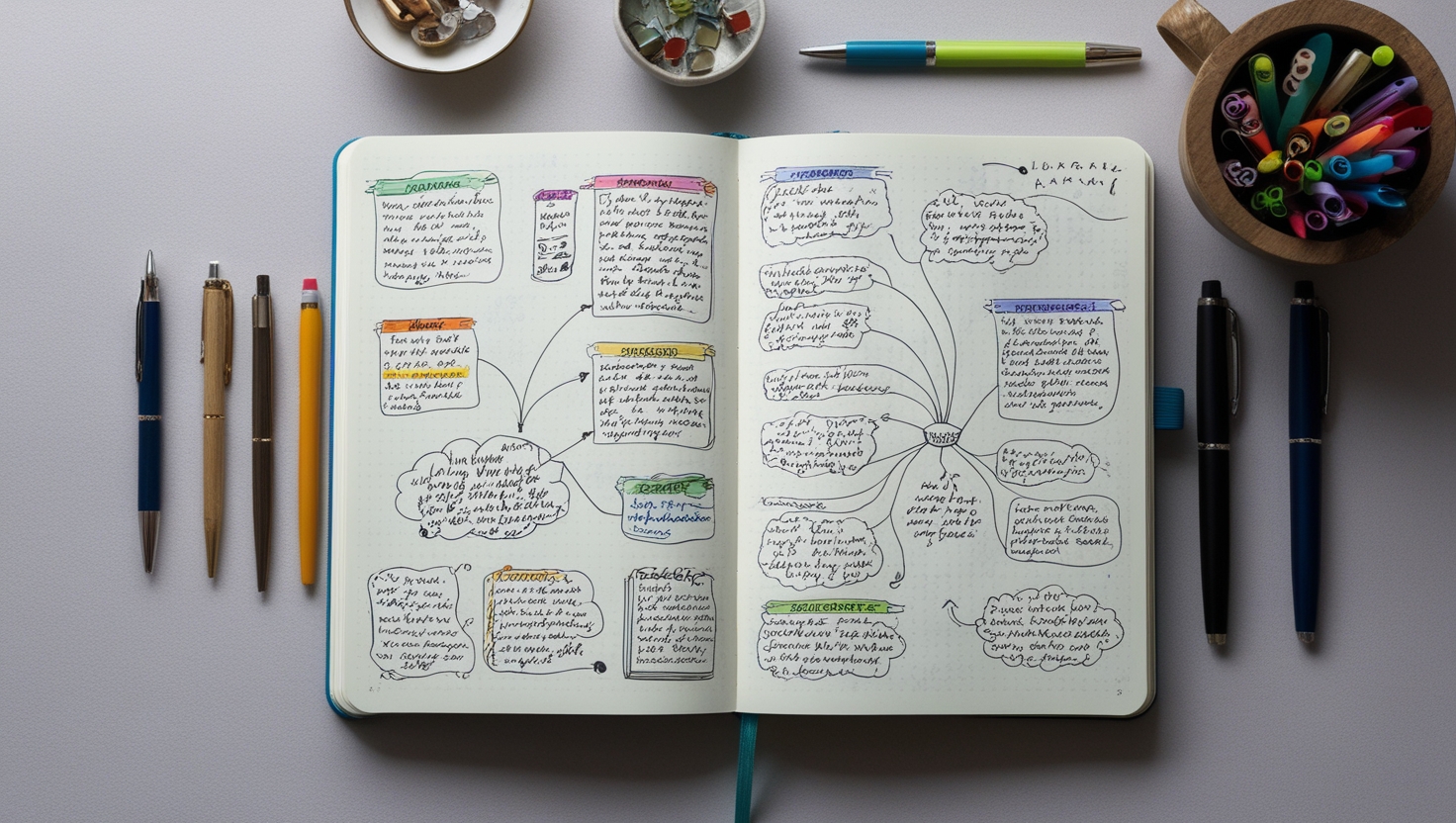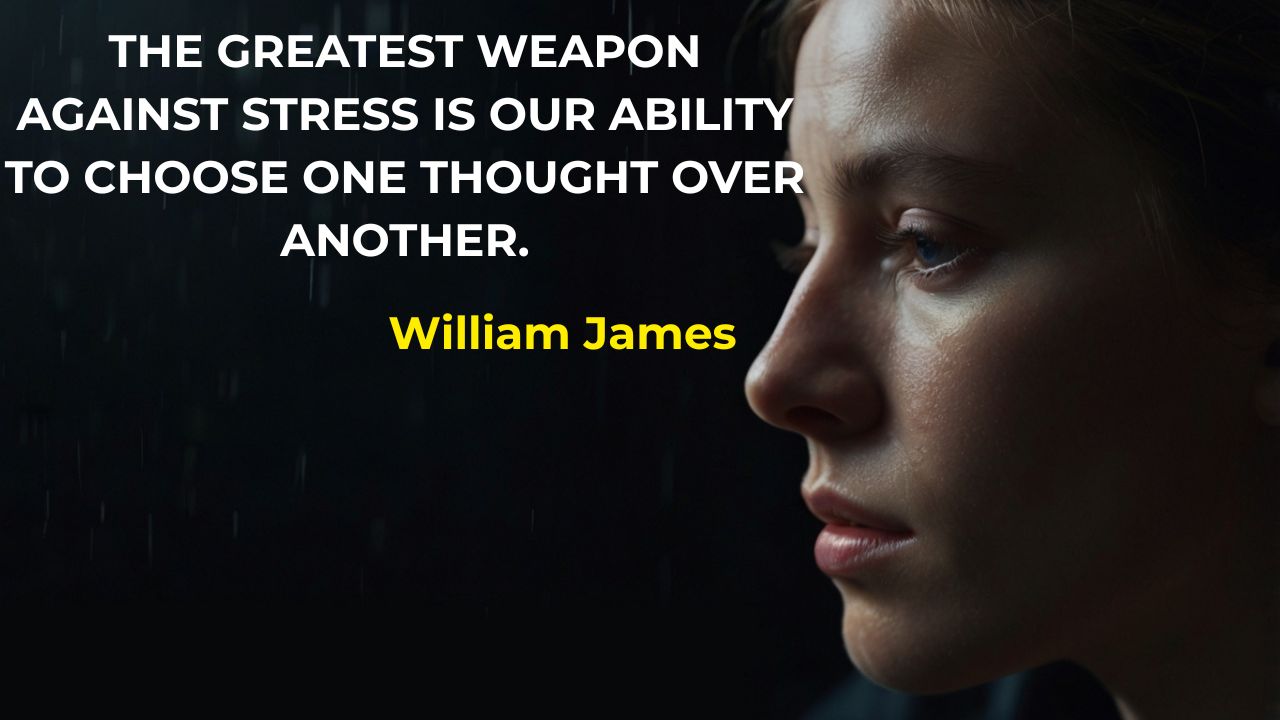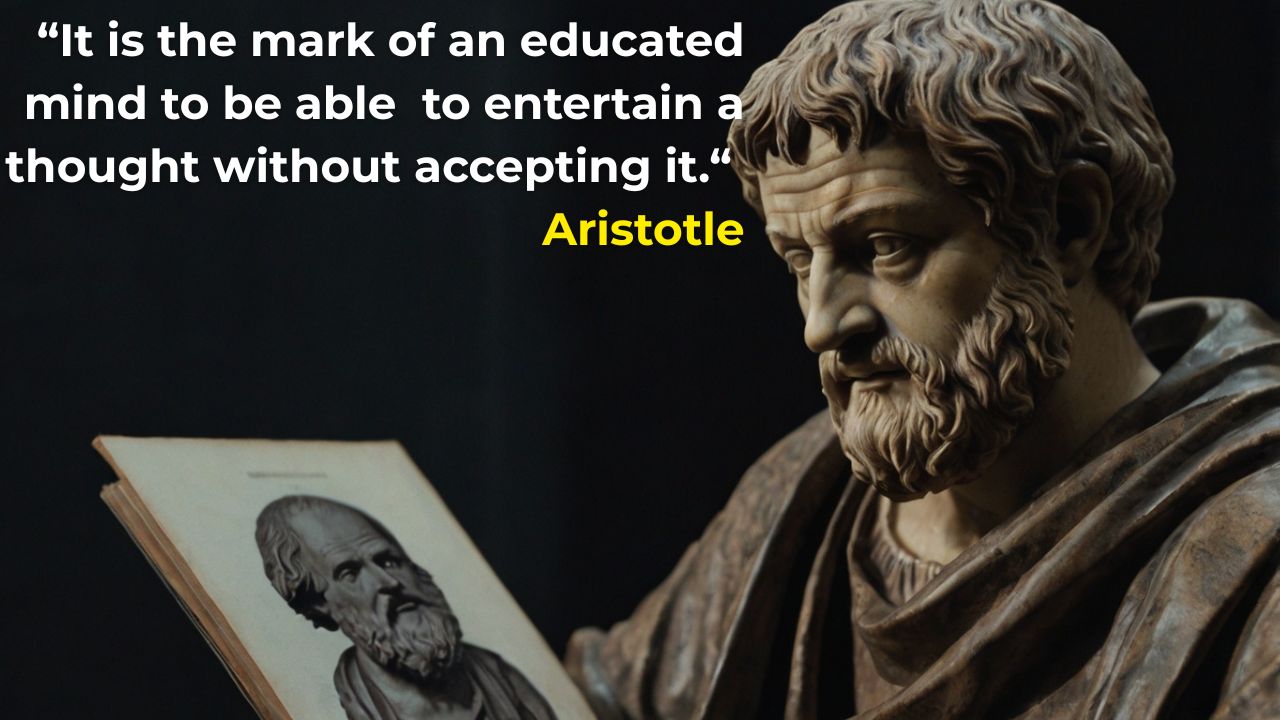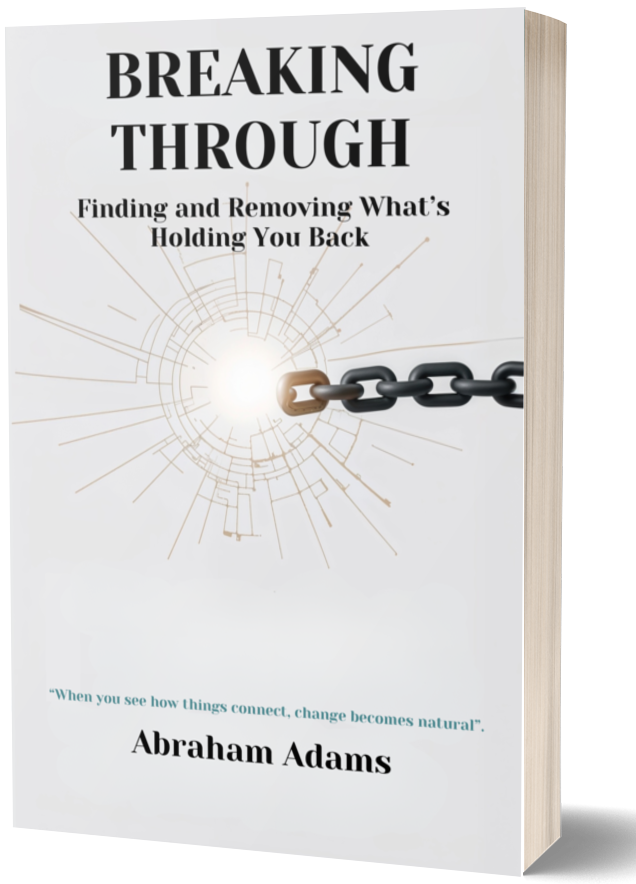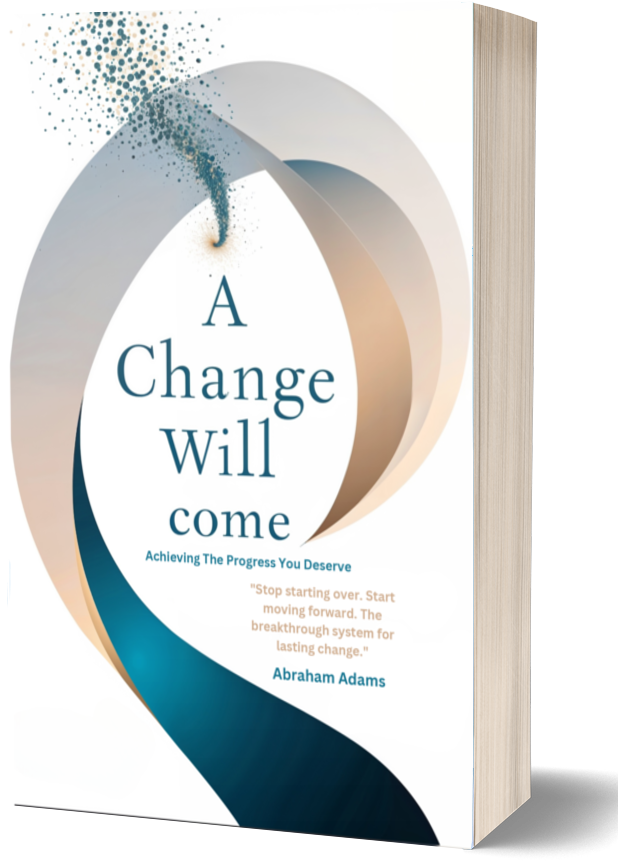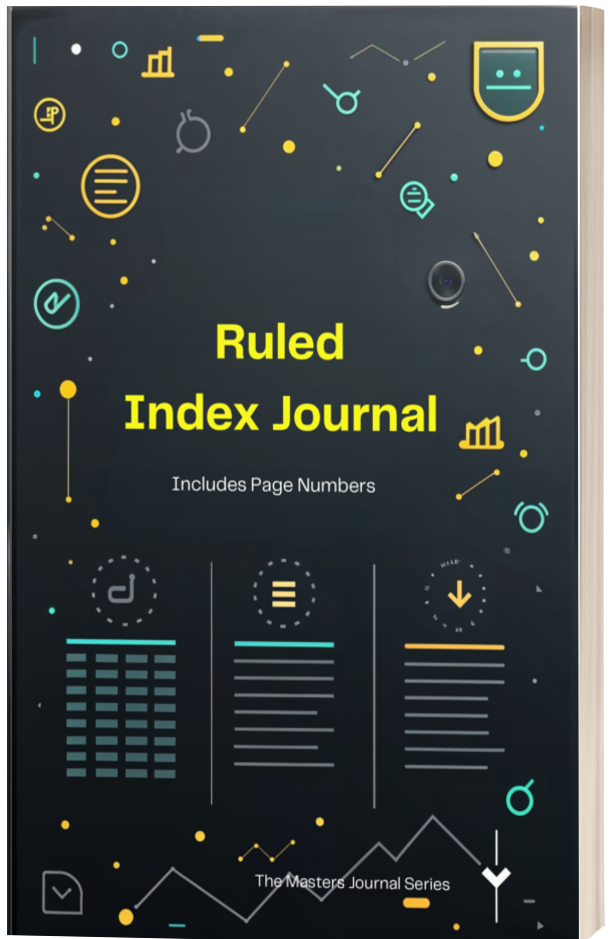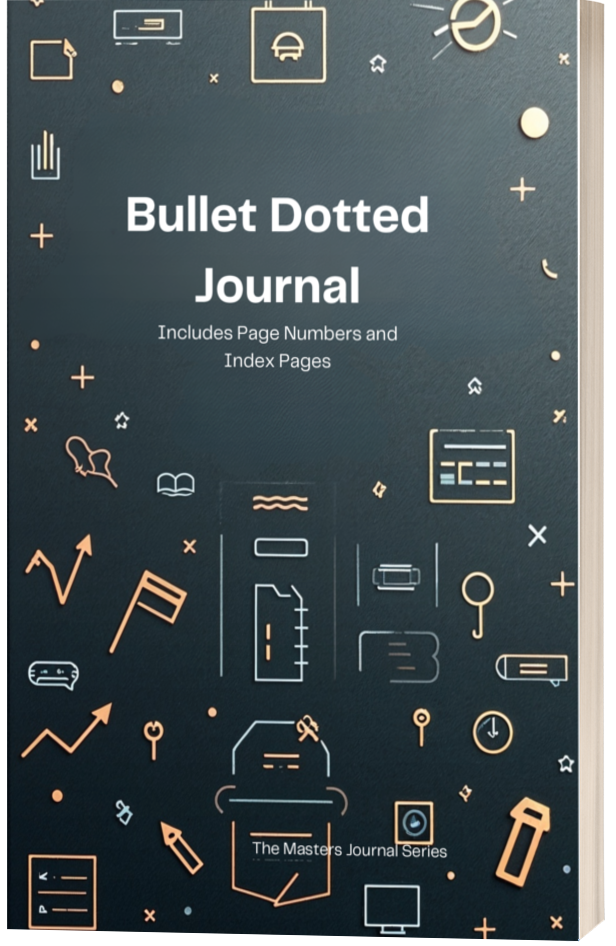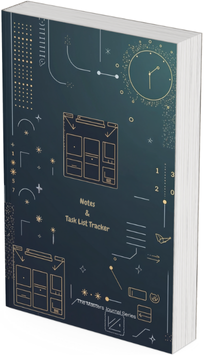Super User
Systems Thinking for Self-Improvement
Systems Thinking for Self-Improvement
Why most personal development fails and how to approach change like a systems thinker
Walk into any bookstore and you'll find thousands of self-help books promising to transform your life. Exercise more, eat better, think positively, set goals, manage time, build habits, develop confidence. The advice is solid, the strategies are proven, and the success stories are inspiring.
So why do most people read these books, feel motivated, try the techniques, and end up right back where they started within a few months?
The problem isn't with the advice. The problem is with the approach.
The Assembly Line Approach to Personal Change
Most self-improvement follows what I call the "assembly line model." It treats you like a car being manufactured, where each problem gets its own specialist:
- Fitness specialist: Fix your exercise and diet
- Productivity specialist: Fix your time management and organization
- Relationship specialist: Fix your communication and boundaries
- Financial specialist: Fix your budgeting and investing
- Mindset specialist: Fix your thoughts and beliefs
Each specialist knows their area perfectly and gives you excellent advice. But they're all working on different parts of the same interconnected system - you.
The fitness specialist tells you to wake up early and exercise. The productivity specialist tells you to work late to get ahead. The relationship specialist tells you to spend more quality time with family. The financial specialist tells you to work more to increase income. The mindset specialist tells you to eliminate stress.
Each piece of advice makes perfect sense in isolation. But when you try to follow all of it simultaneously, you discover that improving one area often makes another area worse. You're not a collection of separate problems - you're a complex system where everything affects everything else.
The You-System
Think of yourself as a system with multiple interconnected components:
Physical System: Your body, energy levels, health, sleep, nutrition, exercise, and physical environment.
Mental System: Your thoughts, beliefs, learning, focus, memory, decision-making patterns, and information processing.
Emotional System: Your feelings, moods, stress responses, emotional regulation, and relationship with yourself.
Social System: Your relationships, communication patterns, social roles, community connections, and influence networks.
Spiritual System: Your sense of purpose, meaning, values, connection to something larger than yourself.
Economic System: Your relationship with money, work, career, financial security, and resource management.
These systems don't operate independently. They're constantly influencing each other through feedback loops, shared resources, and competing demands. Change one system, and ripples flow through all the others.
The Cascade Effect Discovery
Let me show you how this works with Jake's story.
Jake wanted to get in better shape. Simple enough, right? He started working out every morning at 6 AM. For two weeks, he was consistent and felt great about his progress.
But then the cascade began:
Week 3: The early workouts made him tired by evening, so he started going to bed earlier. This meant less time with his wife after work, which created tension in their relationship.
Week 4: To compensate for the relationship tension, he skipped a few workouts to spend more evening time with his wife. But this made him feel guilty and like he was failing at his fitness goals.
Week 5: The guilt about inconsistent exercise started affecting his mood at work. He became more irritable with colleagues, which made his job feel more stressful.
Week 6: Increased work stress made him crave comfort food. He started eating poorly, which made him feel even worse about his health goals.
Week 7: Feeling like a failure in multiple areas, Jake abandoned the morning workouts entirely and felt worse than when he started.
Jake thought he was trying to solve a "fitness problem." Actually, he was reorganizing his entire life system without realizing it. The fitness change triggered cascades through his relationship system, emotional system, and work system. When he tried to "fix" the fitness in isolation, the whole system pushed back.
The Systems Approach to Personal Change
A systems thinker would have approached Jake's situation completely differently:
Step 1: Map the Current System
Instead of focusing on the fitness goal, first understand how all the systems currently work together. What's Jake's energy pattern throughout the day? How does his current schedule support his relationship? What role does exercise currently play in his stress management?
Step 2: Design for the Whole System
Instead of forcing a new workout time into an existing schedule, redesign the schedule to support multiple systems simultaneously. Maybe evening walks with his wife serve both fitness and relationship goals. Maybe weekend active dates replace some gym time.
Step 3: Identify the Constraint
What's the one factor that's limiting Jake's overall well-being? Maybe it's not lack of exercise - maybe it's poor sleep quality that's making him low-energy, which makes exercise feel impossible. Address the constraint, and multiple systems improve automatically.
Step 4: Make Small, Reinforcing Changes
Instead of one big change that disrupts everything, make several small changes that support each other across systems. Better sleep supports energy for exercise, which improves mood, which improves work performance, which reduces stress, which improves sleep.
The Personal Systems Audit
Before making any changes, systems thinkers conduct a personal systems audit. Here's how to do your own:
Physical System Assessment:
- What's your current energy pattern throughout the day?
- How do sleep, nutrition, and movement affect your other systems?
- What physical constraints or capabilities shape your daily experience?
Mental System Assessment:
- What mental models and beliefs are driving your automatic responses?
- How do you currently process information and make decisions?
- What thinking patterns serve you well, and which ones limit you?
Emotional System Assessment:
- How do you currently manage stress and difficult emotions?
- What triggers your emotional responses, and how do they ripple through your life?
- How does your emotional state affect your other systems?
Social System Assessment:
- How do your relationships currently support or drain your energy?
- What social roles are you playing, and how do they align with your goals?
- How does your social environment influence your choices and behaviors?
Spiritual System Assessment:
- What gives your life meaning and purpose right now?
- How connected do you feel to your values and larger goals?
- What feeds your sense of fulfillment vs. what depletes it?
Economic System Assessment:
- How does your relationship with work and money affect your other systems?
- What trade-offs are you currently making between financial security and other goals?
- How do financial pressures influence your daily choices and stress levels?
The Constraint Discovery Process
Once you understand your current systems, look for your personal constraint - the one factor that's limiting everything else. Personal constraints often hide in unexpected places:
Time Constraint Example: "I don't have time for self-care" might actually be "I haven't learned to say no to requests that don't align with my priorities."
Energy Constraint Example: "I'm always tired" might actually be "I'm emotionally exhausted from managing everyone else's feelings."
Motivation Constraint Example: "I lack willpower" might actually be "I'm trying to change behaviors that serve important emotional needs without addressing those needs."
Skill Constraint Example: "I'm not organized" might actually be "I've never learned to design systems that work with my natural tendencies instead of against them."
Belief Constraint Example: "I can't stick to anything" might actually be "I believe I have to be perfect or I'm failing, so small setbacks make me quit entirely."
The Integrated Change Strategy
Once you've found your constraint, design changes that address it while supporting multiple systems:
Single Change, Multiple Benefits: Instead of five separate improvement projects, find one change that improves five areas.
Example: A morning walk addresses physical fitness, mental clarity (time to think), emotional regulation (stress relief), social connection (if done with others), and spiritual wellness (time in nature).
System-Supporting Habits: Design new habits that make other good habits easier, not harder.
Example: Preparing healthy meals on Sunday supports both nutrition goals and time management during busy weekdays.
Constraint-Focused Interventions: Put most of your energy into addressing the constraint, and let other improvements flow naturally from that.
Example: If your constraint is poor boundaries, focus there instead of trying to separately fix time management, stress levels, and relationship issues that all stem from the boundary problem.
The Feedback Loop Leverage
Look for places where you can create positive feedback loops that reinforce good changes:
**Success Breeds Success Loop**: Design early wins that build momentum for bigger changes.
Energy Investment Loop: Invest energy in things that give you more energy back (like exercise, meaningful relationships, or work that energizes you).
Learning Acceleration Loop: Focus on learning skills that help you learn other skills faster (like systems thinking itself, emotional regulation, or effective communication).
Compound Growth Loop: Make changes that build on themselves over time (like building a network, developing expertise, or creating systems that work automatically).
The Personal Transformation Timeline
Systems-based personal change looks different from traditional self-improvement:
Months 1-2: Focus entirely on understanding your current systems and finding your constraint. No major changes yet - just observation and mapping.
Months 3-4: Make one small change targeted at your constraint. Notice how it ripples through other systems. Adjust as needed.
Months 5-6: Add supporting changes that reinforce the first change and address friction points you've discovered.
Months 7-12: Allow the changes to compound and stabilize. Continue fine-tuning based on what you learn about how your systems interact.
Year 2 and beyond: Your improved systems start producing results automatically. You make new improvements from a more stable foundation.
The Anti-Fragile Personal System
The ultimate goal isn't just improvement - it's creating an anti-fragile personal system that gets stronger under stress instead of breaking down.
Anti-fragile personal systems have:
Redundancy: Multiple ways to meet important needs, so you're not vulnerable to single points of failure.
Optionality: Choices and alternatives available when circumstances change.
Learning Loops: Mechanisms that help you continuously adapt and improve based on feedback.
Stress Testing: Regular challenges that strengthen your systems instead of avoiding all difficulty.
Values Alignment: Deep connection between your daily actions and your core values, creating internal coherence.
Your Personal Systems Project
Here's how to apply systems thinking to your own self-improvement:
Week 1: Complete your personal systems audit. Map how your physical, mental, emotional, social, spiritual, and economic systems currently interact.
Week 2: Look for your constraint - the one factor that's limiting multiple other systems.
Week 3: Design one small intervention that addresses your constraint while supporting multiple systems.
Week 4: Implement the change and observe the ripple effects. What feedback are you getting from your various systems?
Ongoing: Adjust your intervention based on system feedback. Add supporting changes only after the first change has stabilized.
The Integration Insight
The power of systems thinking for self-improvement isn't just that it's more effective (though it is). It's that it's more sustainable and more aligned with how you actually work as a human being.
Instead of fighting against your natural complexity, you learn to work with it. Instead of trying to optimize individual components, you optimize the relationships between components. Instead of forcing change through willpower, you design change into the structure of your life.
You stop trying to fix yourself and start learning to conduct yourself like the complex, interconnected symphony you actually are.
The Self-Improvement Revolution
Traditional self-improvement treats you like a machine that needs better parts. Systems thinking treats you like an ecosystem that needs better relationships between the parts.
This shift changes everything. You stop feeling broken when improvements don't stick, because you understand that sustainable change requires system-level design, not just individual effort.
You become both the scientist studying your own complexity and the engineer designing better ways for your complexity to serve your goals.
Welcome to self-improvement that actually works with how you work.
In our next article, we'll dive deeper into breaking personal patterns - using systems thinking to understand and interrupt the stuck cycles that keep you from becoming who you want to be.
Rich Pictures For Complex Situations
Rich Pictures for Complex Situations
When logic isn't enough: drawing your way to clarity in messy, emotional situations
Sometimes life hands you a situation that's too messy, too emotional, or too unclear for logical analysis. You can't draw neat circles and arrows because the problem feels more like a storm than a system. Your thoughts are jumbled, your emotions are all over the place, and traditional problem-solving tools feel as useful as trying to catch fog with a butterfly net.
That's when you need to stop thinking and start drawing.
The Finger Painting Revolution
Remember finger painting in kindergarten? You didn't worry about staying inside the lines or creating realistic proportions. You just expressed what you felt using colors, shapes, and wild imagination. The process of creating was more important than the final product.
Rich Pictures bring that same freedom to complex adult situations. Instead of trying to force messy realities into logical frameworks, you give yourself permission to capture the full complexity - including the emotions, contradictions, and unclear elements - using whatever images, symbols, colors, and metaphors feel right.
It's therapy through art, problem-solving through creativity, and sense-making through expression all rolled into one.
The Moving Day Breakthrough
Let me show you how this works with Sarah's story.
Sarah was facing a decision that was making her crazy: whether to move across the country for her dream job. On paper, it seemed simple - better position, higher salary, exciting city. But every time she tried to think it through logically, she got overwhelmed and confused.
When I suggested she create a Rich Picture instead of a pros-and-cons list, she looked at me like I was crazy. "I'm not an artist," she said. "I can barely draw stick figures."
"Perfect," I replied. "Stick figures are exactly what we need."
The Canvas of Confusion
Sarah started with a large piece of paper and some colored markers. I gave her one simple instruction: "Don't think about making it look good. Just put whatever comes to mind onto the paper."
Here's what emerged over the next 30 minutes:
The Current Life Side: She drew herself as a stick figure sitting in a cozy house (her current apartment), surrounded by wavy lines representing her friend network. She used warm colors - yellows and oranges. But she also drew gray clouds overhead labeled "boring job" and "same routine."
The New Life Side: She drew herself as a stick figure in a big city with tall buildings (skyscrapers that looked like prison bars, she noted). She used exciting colors like red and purple, but the stick figure looked smaller and more isolated.
The Middle: Between these two sides, she drew a giant question mark with a face showing multiple emotions - excitement, fear, sadness, anticipation all mixed together.
The Surrounding Chaos: Around the edges, she scattered words and symbols representing all the factors she was considering: "Mom will be sad" (with a crying face), "Career growth" (with an upward arrow), "Starting over" (with a big scary monster), "Adventure" (with a sunshine), "Leaving friends" (with broken hearts).
The Underground: At the bottom of the page, she drew what she called "the root system" - tangled lines connecting to words like "proving myself," "fear of regret," "what if I fail," and "what if I don't try."
The Revelation in the Picture
As Sarah looked at her completed Rich Picture, something amazing happened. The decision that had felt impossibly complex suddenly had clarity.
"Oh my God," she said. "I'm not really deciding between two jobs. I'm deciding between safety and growth. And look - I drew the safety as cozy but with gray clouds, and I drew the growth as scary but colorful. My subconscious already knows what I want."
She pointed to the stick figure in the big city. "I drew her smaller, but I used brighter colors. And look at these prison bar buildings - I'm afraid of being trapped, but I drew them reaching toward the sky. Even my fears are telling me this is about expansion."
The Rich Picture revealed what logical analysis had missed: this wasn't a practical decision about jobs and locations. It was an emotional decision about who she wanted to become.
The Rich Picture Method
Here's how to create your own Rich Picture for any messy situation:
Step 1: Gather Your Materials
- Large paper (at least 11x17, bigger is better)
- Colored markers, crayons, or pencils
- Your phone with a timer set for 30-45 minutes
- A messy, unclear, or emotional situation that needs understanding
Step 2: Set Your Intention
Don't aim to solve the problem or make a beautiful picture. Your only goal is to get what's in your head and heart onto the paper. Think of it as emptying a drawer - you're just getting everything visible so you can see what you're working with.
Step 3: Start Anywhere
Put your marker on the paper and make a mark. It could be a shape, a word, a squiggle, or a stick figure. The hardest part is starting, so don't overthink it.
Step 4: Follow Your Intuition
Let your hand move without your brain's permission. If you feel like drawing a house, draw a house. If you want to write a word in purple, write it in purple. If you need to draw angry scribbles, draw angry scribbles.
Step 5: Include Everything
Put in the people, the emotions, the fears, the hopes, the practical considerations, the crazy ideas, the things that don't make sense. Everything is welcome.
Step 6: Use Whatever Visual Language Works
You might use:
- Stick figures for people
- Weather symbols for emotions (storm clouds for confusion, sunshine for happiness)
- Animals to represent different aspects of yourself (timid mouse, brave lion)
- Landscapes to show different scenarios
- Abstract shapes and colors to express feelings
- Words and phrases scattered throughout
- Arrows showing movement or connection
- Symbols that mean something to you
Step 7: Don't Edit Yourself
If you draw something and then think "That's stupid," leave it anyway. The stupid stuff often contains the most insight.
The Messy Masterpiece Gallery
Here are some Rich Pictures clients have created for different types of complex situations:
The Career Change Storm: A person drew themselves as a boat in rough waters, with different islands representing career options. Some islands looked tropical and inviting but were surrounded by shark-filled waters (risks). Others looked safe but boring (current job as a gray, flat island). The most revealing part was a small island in the distance that they'd almost forgotten to include - starting their own business - which they'd drawn with a tiny figure waving frantically for attention.
The Relationship Dilemma: A woman drew her heart as a house with different rooms. One room was filled with warm golden light (love for her partner) but had cracks in the walls (trust issues). Another room was dark and locked (her fear of commitment). The hallway between rooms was cluttered with old furniture (past relationship baggage). The picture revealed that the issue wasn't whether she loved her partner, but whether she could clean out the hallway and repair the cracks.
The Family Drama Map: A man drew his family as different weather systems. His mother was a tornado (unpredictable drama), his father was a steady drizzle (constant criticism), his sister was lightning (brilliant but explosive), and he drew himself as a rainbow trying to appear after every storm. The picture helped him see that he'd been playing the role of "family peacemaker" for so long that he'd forgotten he could choose different weather for himself.
The Magic of Metaphor
Rich Pictures work because they tap into the power of metaphor and visual thinking. Your logical mind gets stuck in details and contradictions, but your creative mind can hold multiple truths simultaneously.
When Sarah drew the buildings as prison bars reaching toward the sky, she captured something logical analysis couldn't: that her fear of being trapped was actually about expansion, not confinement. The visual metaphor revealed the paradox that her logical mind was struggling with.
The Emotional Intelligence Canvas
Traditional problem-solving tools focus on facts and logic. Rich Pictures include the emotional intelligence that's often missing from decision-making:
What you're afraid of: Monsters, dark clouds, scary faces
What excites you: Bright colors, upward arrows, sunshine
What drains you: Gray areas, heavy objects, downward slopes
What energizes you: Vibrant colors, flowing lines, growing plants
What confuses you: Question marks, tangled lines, multiple faces on one figure
This emotional information is just as important as the logical information, but it's often ignored because it doesn't fit into neat categories.
The Process Is the Product
Don't worry about creating a masterpiece that others can understand. Rich Pictures are primarily for you, and they work through the process of creation as much as the final result.
As you draw, you'll notice:
- Which parts of the picture you're drawn to elaborate on
- What colors you naturally choose for different elements
- What symbols and metaphors emerge spontaneously
- How the act of drawing clarifies your thinking
- Which aspects of the situation you've been ignoring
The Interpretation Phase
Once you've completed your Rich Picture, step back and look at it as if you're seeing it for the first time. Ask yourself:
What patterns do you notice?
- Which areas are most detailed or colorful?
- What's the overall mood of different sections?
- Are there elements that surprise you?
What metaphors emerged?
- How did you represent yourself in different scenarios?
- What symbols did you use for challenges and opportunities?
- What does the spatial arrangement tell you?
What's missing?
- Are there important factors you forgot to include?
- Are there stakeholders who didn't make it into the picture?
- Are there options you didn't consider?
What story does the picture tell?
- If this were a scene from a movie, what would happen next?
- Which elements seem to want your attention?
- What would you change if you could wave a magic wand?
The Integration Challenge
The biggest challenge with Rich Pictures is integrating the insights back into logical decision-making. You've accessed creative and emotional intelligence, but you still need to take practical action in the real world.
Here's how to bridge that gap:
Translate metaphors into actionable insights: If you drew yourself as a small fish in a big pond, what would help you feel less vulnerable in that new environment?
Honor the emotional wisdom: If your gut reaction (represented by colors and symbols) contradicts your logical analysis, explore why. What does your emotional intelligence know that your logical mind is missing?
Look for the hidden third options: Rich Pictures often reveal possibilities that didn't emerge from logical analysis. Pay attention to elements that showed up spontaneously.
The Messy Situation Prescription
Rich Pictures are perfect for situations that resist traditional analysis:
- Major life transitions where you can't see the whole picture clearly
- Relationship issues involving complex emotions and competing needs
- Career decisions that involve personal values and identity questions
- Family dynamics where logic and emotion are intertwined
- Creative projects where you need to access intuitive wisdom
- Any situation where you feel stuck because you're overthinking
Your Canvas Awaits
Pick a situation in your life that feels too messy, emotional, or complex for logical analysis. Something where you've been going in circles thinking about it, or where traditional pros-and-cons lists leave you feeling more confused than before.
Give yourself 45 minutes, a large piece of paper, and permission to create something imperfect. Don't aim for art - aim for expression.
Let your hands move faster than your brain can edit. Include the contradictions, the fears, the hopes, and the parts that don't make logical sense.
When you're done, you'll have something precious: a visual representation of your inner landscape around this complex situation. And often, that's exactly what you need to find your way forward.
The Creative Intelligence Awakening
Rich Pictures awaken a type of intelligence that's often dormant in our logical, analytical world. They remind you that you have access to wisdom beyond what your thinking mind can produce.
This creative intelligence doesn't replace logical analysis - it complements it. Together, they give you a more complete picture of complex situations and access to solutions that neither could produce alone.
The Finger Paint Revolution Continues
Remember that kindergarten freedom of expression? It's still inside you, waiting to help you make sense of the beautiful mess of adult life.
Your next breakthrough might not come from thinking harder - it might come from drawing worse.
Welcome back to the finger painting revolution. Your messy masterpiece is waiting to be created.
You've now learned six powerful visual tools for making the invisible visible. Each tool serves a different purpose, but together they give you the ability to see patterns, understand complexity, and find leverage points in any situation. The invisible world of systems is about to become your visible advantage.
Connection Circles Made Simple
Connection Circles Made Simple
How to see all the moving pieces when everything affects everything else
Picture this: You're trying to solve a jigsaw puzzle, but every time you place a piece, three other pieces shift position. You think you're making progress on the corner, but your work there somehow affects the middle, which changes the border, which moves the corner pieces again.
This is what it feels like when you're dealing with a complex situation where multiple factors are influencing each other simultaneously. Your health affects your energy, which affects your work performance, which affects your stress level, which affects your relationships, which affects your health. Everything is connected to everything else, and it's impossible to see the whole picture while you're focused on individual pieces.
That's when you need a Connection Circle.
The Orchestra Conductor's View
Imagine trying to understand a symphony by listening to just one instrument at a time. You might hear the violin melody, then focus on the drums, then pay attention to the horns. But you'd miss the magic - the way all the instruments interact to create something beautiful together.
A Connection Circle is like stepping back and seeing the entire orchestra at once. Instead of focusing on individual problems or factors, you map out all the key elements in a situation and trace how they influence each other.
The result is a bird's-eye view of complexity that makes patterns visible and shows you where small changes can create big ripples throughout the whole system.
The Family Dinner Mystery
Let me show you how this works with the Martinez family's dinner time chaos.
Every evening, their house turned into a battleground. Kids were cranky, parents were stressed, homework wasn't getting done, and everyone went to bed feeling frustrated. They'd tried different approaches - stricter schedules, earlier dinners, taking away screens - but nothing seemed to help.
When we mapped out all the factors using a Connection Circle, here's what we discovered:
The Cast of Characters (all the factors affecting dinner time):
- Dad's unpredictable work schedule
- Mom's after-school taxi service for three kids
- Kids' hunger levels and blood sugar crashes
- Homework stress and deadlines
- Screen time and device addiction
- Family communication patterns
- Kitchen organization and meal prep
- Each person's energy levels throughout the day
- Weekend vs. weekday routines
The Hidden Connections:
- Dad's uncertain arrival time made Mom reluctant to start cooking, which delayed dinner, which meant kids got hungrier and crankier
- Cranky kids made dinner unpleasant, which made everyone want to eat quickly and scatter, which meant no family connection time
- Lack of family connection time made everyone feel disconnected, which made kids more likely to act out during dinner
- Kids acting out made parents more stressed, which made Dad want to work late to avoid the chaos, which made his schedule even more unpredictable
What looked like a "dinner problem" was actually a complex web where each factor was influencing multiple other factors. No single solution could work because changing one thing would trigger reactions throughout the entire system.
The Connection Circle Method
Here's how to create your own Connection Circle for any complex situation:
Step 1: Name Your Situation
Start with a clear description of the complex situation you're trying to understand. Be specific but not too narrow.
Good examples:
- "Why our team meetings are always unproductive"
- "Why I can't maintain a consistent exercise routine"
- "Why our household budget never works"
- "Why this project keeps getting derailed"
Step 2: Brainstorm All the Factors
List everything that seems relevant to your situation. Don't worry about whether they're "important" or not - just capture everything you can think of.
Include:
- People involved and their personalities/motivations
- Physical environments and constraints
- Time factors and scheduling issues
- Emotional states and stress levels
- External pressures and deadlines
- Resources (money, energy, attention)
- Habits and routines
- Communication patterns
- Past experiences and expectations
For the exercise routine example, factors might include:
- Your energy levels at different times of day
- Work schedule and commute time
- Gym location and convenience
- Weather and seasonal changes
- Workout clothes and equipment
- Motivation and mood
- Sleep quality
- Social support or accountability
- Previous exercise experiences
- Health concerns or physical limitations
- Competing priorities and time pressure
Step 3: Look for the Influence Relationships
This is where the magic happens. Go through your list and ask: "How does Factor A affect Factor B?"
You're not looking for simple cause-and-effect. You're looking for influence relationships - ways that changes in one factor tend to affect other factors.
Some examples:
- "When my sleep quality is poor, my motivation to exercise decreases"
- "When I skip workouts, I feel guilty, which affects my mood"
- "When my mood is low, I tend to sleep poorly"
- "When the weather is bad, I avoid the gym, which breaks my routine"
- "When my routine is broken, it's harder to restart"
Step 4: Trace the Ripple Effects
Follow the connections to see how changes ripple through the system. Ask: "If this factor changed, what else would be affected?"
This often reveals surprising connections:
- "If I moved my workout clothes next to my bed, I'd be more likely to exercise in the morning, which would give me more energy, which would improve my mood, which would make me more motivated to maintain the routine"
Step 5: Look for the Loops
Just like with feedback loops, look for places where influences circle back on themselves. These loops are often the key to understanding why situations stay stuck or why small changes can have big effects.
In the exercise example:
- Low energy → Skip workout → Feel guilty → Sleep poorly → Lower energy
- Exercise regularly → Feel good → Sleep better → More energy → Want to exercise more
The Three Types of Connections
As you map your connections, you'll notice three different types:
Reinforcing Connections: When more of A leads to more of B
- "The more I exercise, the more energy I have"
- "The more stressed I am, the more I procrastinate"
**Balancing Connections**: When more of A leads to less of B
- "The more I work, the less time I have for family"
- "The more I save money, the less I have for entertainment"
**Delayed Connections**: When A affects B, but not immediately
- "Working late tonight will make me tired tomorrow"
- "Skipping exercise this week will affect my mood next week"
The Aha Moment Pattern
When people create their first Connection Circle, they almost always have the same reaction: "Oh! No wonder this has been so hard to change!"
They realize they've been trying to solve a multi-factor problem with single-factor solutions. They've been pushing on one part of the system while ignoring all the other parts that were pushing back.
The Martinez family realized that "fixing dinner time" required addressing Dad's work boundaries, Mom's transportation logistics, the kids' after-school snack timing, AND the family's communication habits. No single change would work, but small changes in multiple areas could transform the whole system.
Finding Your Leverage Points
Once you can see all the connections, look for these high-leverage intervention points:
The Hub Factors: Elements that influence many other factors. Changing these creates ripples throughout the system.
The Loop Breakers: Places where small changes can interrupt negative cycles or strengthen positive ones.
The Easy Wins: Factors that are relatively easy to change but have surprisingly large effects on other factors.
The Foundation Factors: Basic elements that, when stabilized, make everything else easier.
For the exercise routine example:
- Hub Factor: Sleep quality (affects energy, motivation, mood, and recovery)
- Loop Breaker: Laying out workout clothes the night before (breaks the morning decision-making loop)
- Easy Win: Finding a gym that's actually convenient (removes a major friction point)
- Foundation Factor: Setting a consistent bedtime (creates the energy foundation for everything else)
The Multiple Small Changes Strategy
Traditional problem-solving says: "Find the biggest problem and fix it." Connection Circle thinking says: "Find multiple small changes that support each other."
Instead of one big intervention, you make several small changes that reinforce each other through the connection network:
For the Martinez family:
- Dad commits to a 6 PM communication about his arrival time (small change)
- Mom prepares backup snacks for hungry kids (small change)
- Family institutes a "no complaints during dinner" rule (small change)
- Everyone puts devices in a basket before eating (small change)
Each change was small and manageable, but together they transformed the entire dinner experience because they addressed multiple connection points simultaneously.
The Complexity Paradox
Here's the paradox: when you map out complex situations, they initially look more complicated than before. You see all these factors and connections, and it can feel overwhelming.
But then something shifts. The complexity becomes organized. What felt chaotic and unpredictable becomes logical and manageable. You stop feeling like a victim of circumstances and start feeling like someone who understands how the system works.
Your Connection Circle Assignment
Pick a situation in your life that feels complex and stuck - something where you've tried multiple solutions but nothing seems to create lasting change.
Follow the five steps:
1. Name your situation clearly
2. Brainstorm all relevant factors
3. Look for influence relationships between factors
4. Trace the ripple effects
5. Find the loops and cycles
Don't try to solve anything yet. Just map the connections. See the whole orchestra before you try to conduct it.
The Web of Understanding
When you finish your first Connection Circle, you'll have created something precious: a map of complexity that makes sense. You'll see why this situation has been difficult to change and where the real opportunities for intervention lie.
More importantly, you'll have developed systems eyes - the ability to see multiple factors and their relationships simultaneously. This skill will serve you in every complex situation you encounter for the rest of your life.
The Network Effect
Connection Circles reveal something profound: most problems aren't problems with things - they're problems with relationships between things. Change the relationships, and the things automatically behave differently.
This insight transforms how you approach complexity. Instead of trying to fix individual elements, you learn to work with the network of connections that determines how those elements interact.
Welcome to network thinking. Once you see the connections, you never see problems the same way again.
In our final visual tools article, we'll explore Rich Pictures - a creative method for making sense of messy, emotional, or unclear situations that don't fit into logical frameworks.
The Iceberg Tool
The Iceberg Tool
How to dive beneath surface problems to discover what's really driving them
The Titanic's lookouts could see the tip of the iceberg clearly. It looked manageable - maybe 20 feet tall, definitely something they could steer around. What they couldn't see was the massive 200-foot structure hidden beneath the surface, the part that would actually sink the ship.
Most people approach their life problems like those lookouts. They see the obvious part - the argument with their spouse, the missed deadline at work, the emotional eating episode - and they try to steer around it. They address the visible 20 feet while the invisible 200 feet continues to control everything.
The Iceberg Tool teaches you to see what's really beneath the surface before it sinks your ship.
The Four Levels of Reality
Think of every problem in your life as existing at four different levels, like floors in a building:
Level 1 - Events (What Happened): The obvious, visible things that everyone can see. The argument, the missed deadline, the binge eating episode.
Level 2 - Patterns (What Keeps Happening): The recurring themes that most people start to notice if they pay attention. "We always fight about money," "I always miss deadlines when I'm stressed," "I always overeat when I'm lonely."
Level 3 - Structures (What Makes It Keep Happening): The invisible forces, rules, and systems that create the patterns. The family belief about money, the workplace culture around deadlines, the emotional management system that uses food for comfort.
Level 4 - Mental Models (What Creates the Structures): The deepest beliefs and assumptions that create the structures. "Money is scarce and dangerous," "My worth depends on my productivity," "I'm not allowed to feel bad emotions."
Most people spend their entire lives on Level 1, reacting to events. Some people notice Level 2 patterns. Very few people see Level 3 structures. Almost nobody examines Level 4 mental models.
But Level 4 is where the real power lies.
The Deep Sea Diving Expedition
Let me show you how this works with Rachel's money story, diving level by level.
Level 1 - The Event: Rachel had a massive fight with her husband about a $200 pair of shoes she bought impulsively. He was furious about the spending, she was defensive about her purchase, and they didn't speak for two days.
Most people would focus here: "We need to communicate better about money," or "She needs more self-control," or "He needs to be less controlling."
But let's dive deeper.
Level 2 - The Pattern: This wasn't their first money fight. Looking back, Rachel realizes they have this same fight every few months. She makes an impulse purchase, he gets angry, she gets defensive, they stop talking, then eventually sweep it under the rug without really resolving anything.
This level reveals it's not just one incident - it's a recurring cycle.
Level 3 - The Structure: Digging deeper, Rachel discovers several invisible structures creating this pattern:
- Financial Structure: They never established clear agreements about discretionary spending
- *Communication Structure*: Their family rule is "avoid conflict at all costs," so they never address money issues directly until they explode
- Emotional Structure: Rachel uses shopping as therapy when she feels stressed or undervalued
- Power Structure: Her husband manages most of the finances, making Rachel feel like she has to ask permission for purchases
These structures make the pattern almost inevitable.
Level 4 - The Mental Models: At the deepest level, Rachel discovers the beliefs creating these structures:
- Rachel's Model: "I don't deserve nice things unless I'm perfect, but when I am perfect, I deserve a reward"
- Her Husband's Model: "Money represents security, and spending it frivolously means we're not safe"
- Shared Model: "Conflict is dangerous and should be avoided, even if it means problems never get solved"
These mental models, inherited from their respective childhoods, were creating the structures that were creating the patterns that were creating the events.
The Detective's Descent
Here's how to use the Iceberg Tool on your own problems:
Step 1: Identify Your Event
Pick a recent incident that bothered you - an argument, a failure, a reaction you didn't like, a situation that didn't go as planned.
Write it down as specifically as possible: "On Tuesday, I snapped at my coworker when she asked me a simple question about the Johnson project."
Step 2: Look for the Pattern
Ask yourself: "When else has something like this happened?"
Don't just look for identical situations. Look for similar themes, feelings, or reactions in different contexts.
"I snap at people when I feel overwhelmed. This happens with my coworker, my kids, customer service representatives, and even my friends when they call at the wrong time."
Step 3: Investigate the Structures
This is where most people get stuck because structures are invisible. Ask these detective questions:
- "What conditions make this pattern more likely to happen?"
- "What rules, spoken or unspoken, am I following?"
- "What systems or environments contribute to this?"
- "What incentives or pressures am I responding to?"
For the snapping pattern:
- Time Structure: I'm always overscheduled with no buffer time
- Workplace Structure: The office culture rewards being constantly busy
- Personal Structure: I believe saying no makes me unreliable
- Energy Structure: I never take breaks, so I'm always running on empty
Step 4: Uncover the Mental Models
Ask the deepest questions:
- "What would I have to believe for these structures to make sense?"
- "What assumptions about myself, others, or life create these rules?"
- "What am I afraid will happen if I change these patterns?"
For the snapping pattern:
- "My worth comes from being helpful and available to everyone"
- "If I'm not constantly busy, I'm being lazy"
- "Other people's needs are more important than my well-being"
- "I have to prove I deserve my job every single day"
The Submarine Journey
Think of this process like descending in a submarine:
Surface Level (Events): You can see everything clearly, but you're only seeing a tiny fraction of what's actually there.
Periscope Depth (Patterns): You start to see recurring shapes and movements beneath the surface.
Mid-Water (Structures): The light gets dimmer, but you begin to see the massive formations that create the surface activity.
Deep Ocean (Mental Models): It's dark down here, but this is where the real architecture lives - the underwater mountains and trenches that determine everything happening above.
The Revelation at Each Level
Each level reveals different truths:
Events tell you: Something happened
Patterns tell you: Something keeps happening
Structures tell you: Why it keeps happening
Mental Models tell you: Why the structures exist in the first place
Most solutions fail because they're aimed at the wrong level. You can't solve a Level 4 problem with a Level 1 solution.
The Wrong Level Solutions
Here are examples of mismatched solutions:
Event-level solution for a Structure problem: "I'll just try harder to control my temper" (when the real issue is being chronically overscheduled)
Pattern-level solution for a Mental Model problem: "I'll track my spending better" (when the real issue is believing you don't deserve nice things)
Structure-level solution for a Mental Model problem: "We'll have weekly money meetings" (when the real issue is fundamentally different beliefs about what money means)
The Right Level Interventions
Once you know what level you're really dealing with, you can choose the right intervention:
Event Level: Crisis management, immediate response
Pattern Level: Behavior change, habit modification
Structure Level: System redesign, environment changes
Mental Model Level: Belief examination, assumption questioning
Rachel's money fights required Level 4 intervention - examining and updating the mental models about money, worth, and conflict that were creating all the problems above.
The Depth Gauge Questions
Not sure which level you've reached? Use these questions as your depth gauge:
Still at Events if you're asking: "How do I handle this situation?"
Reached Patterns if you're asking: "How do I break this cycle?"
Found Structures if you're asking: "What system is creating this pattern?"
Discovered Mental Models if you're asking: "What beliefs make this system seem necessary?"
The Deep Dive Practice
Pick a problem that's been recurring in your life. Start with a specific recent event, then dive level by level:
Event: What exactly happened?
Pattern: When else has this theme shown up?
Structure: What invisible forces make this pattern likely?
Mental Model: What beliefs create those forces?
Don't rush to solutions. Spend time at each level, really understanding what you're seeing before diving deeper.
The deeper you go, the more powerful your eventual intervention will be.
The Pressure of the Deep
Here's what to expect as you dive deeper:
Level 1 feels: Frustrating but familiar
Level 2 feels: Discouraging ("This keeps happening")
Level 3 feels: Overwhelming (so many invisible forces)
Level 4 feels: Profound and sometimes emotional (core beliefs about yourself and reality)
The pressure increases as you go deeper, but so does the potential for transformation.
The Ascent with Insight
Once you've reached the mental model level, you begin your ascent with new understanding:
You see how your deepest beliefs created structures that created patterns that created events.
You understand why surface-level solutions haven't worked.
You know where to intervene for maximum impact.
You realize you're not broken - you're operating perfectly within a system that was designed for different circumstances.
The Iceberg's Gift
The Iceberg Tool gives you X-ray vision for problems. Instead of being puzzled by recurring patterns, you can trace them to their source. Instead of fighting symptoms, you can address causes.
Most importantly, you stop taking events personally. When you can see the four levels clearly, you realize that what feels like personal failure is usually just the predictable result of invisible structures and beliefs.
The iceberg that sank the Titanic was invisible, but it wasn't mysterious. It was following the laws of physics, currents, and temperature. Once you understand those laws, icebergs become predictable and navigable.
Your problems work the same way.
Your Deep Sea Exploration
You now have the submarine and the depth gauge. Time to explore the depths of a pattern that's been puzzling you.
Remember: the goal isn't to reach the bottom as quickly as possible. The goal is to see clearly at each level, understanding how one creates the next.
Take your time. The deep ocean of your patterns has been there for years - it's not going anywhere. But once you've mapped it, you'll never be surprised by what surfaces again.
Welcome to the depths. The most profound insights live down here, waiting to be discovered.
In our next article, we'll learn Connection Circles - a tool for mapping complex situations where multiple factors are influencing each other simultaneously.
Making Your Mental Models Visible
Making Your Mental Models Visible
How to uncover the invisible beliefs that script your automatic responses
Imagine you're watching a play where the actors keep delivering the same lines, making the same mistakes, and ending up in the same tragic situations night after night. You're sitting in the audience thinking, "Why don't they just do something different?"
Then you realize: the actors aren't choosing their lines. They're reading from a script they can't see, written by someone they've never met, based on a story they don't remember agreeing to perform.
Your life works the same way. You're the actor, and your mental models are the invisible script.
The Invisible Scriptwriter
A mental model is like a lens through which you see reality. It's a set of assumptions, beliefs, and rules about how the world works that operate automatically in the background of your mind.
These lenses determine:
- What you notice and what you ignore
- What you consider possible and what you dismiss as unrealistic
- How you interpret other people's behavior
- What you expect to happen in different situations
- How you automatically respond when certain triggers occur
Most people live their entire lives without ever examining these lenses. They just assume that what they see through them is "reality" - not realizing they're seeing reality filtered through invisible assumptions.
The Restaurant Story
Let me show you how powerful mental models are with Lisa's restaurant story.
Lisa had been single for three years and couldn't understand why every promising relationship ended the same way. She'd meet someone great, things would go well for a few weeks, then she'd start feeling anxious and picking fights until they eventually broke up.
During one of our conversations, she mentioned something that seemed unrelated: she never sent food back at restaurants, even when it was completely wrong.
"What do you mean?" I asked.
"Well, if I order a chicken salad and they bring me a burger, I just eat the burger. I don't want to bother the server or make them think I'm difficult."
That's when we discovered Lisa's invisible mental model: "If I have needs or express dissatisfaction, people will find me difficult and reject me."
This script was running automatically in every area of her life:
At restaurants: Accept whatever you get, even if it's not what you ordered.
At work: Don't ask for raises or better assignments because that's being demanding.
In relationships: Don't express what you need because that's being needy.
But here's what was really happening in her relationships: Because Lisa never expressed her actual needs, she felt increasingly frustrated and unheard. The frustration would build until it exploded in seemingly random fights about small things. Her partners had no idea what was really bothering her because she'd never told them.
Her mental model - designed to prevent rejection - was creating the very rejection it was trying to avoid.
The Three Layers of Mental Models
Mental models operate at three different levels, like layers of an onion:
Surface Layer - The Rules: "I should always be nice to people."
Middle Layer - The Beliefs: "If I'm not nice, people won't like me."
Core Layer - The Assumptions: "My worth depends on other people's approval."
Most people only notice the surface layer - the rules they follow. But the real power lies in the deeper layers - the beliefs and assumptions that create those rules.
The Archaeology of Your Mind
Uncovering mental models is like being an archaeologist of your own mind. You start with visible artifacts (your behaviors and reactions) and dig deeper to find the invisible structures that created them.
Here's how to excavate your own mental models:
Step 1: Notice Your Automatic Responses
Pick an area of your life where you consistently react the same way, even when you don't want to.
Maybe you:
- Always say yes when people ask for favors, even when you're overwhelmed
- Get defensive whenever someone gives you feedback
- Avoid speaking up in groups, even when you have good ideas
- Procrastinate on important tasks but have no trouble with urgent ones
Step 2: Ask the Belief Detective Questions
For each automatic response, ask:
- "What would have to be true for this response to make sense?"
- "What am I afraid will happen if I respond differently?"
- "What do I believe about myself, others, or the world that makes this feel necessary?"
Step 3: Follow the Thread Backward
Keep asking "Why?" until you reach a core assumption.
Example with chronic people-pleasing:
- Why do I always say yes? → Because I don't want to disappoint people
- Why don't I want to disappoint people? → Because they might get upset with me
- Why would that be a problem? → Because they might not like me anymore
- Why would that be terrible? → Because I need people to like me to feel okay about myself
- Why do I need that? → Because I'm not inherently valuable on my own
Step 4: Test Your Discovery
Look for evidence of this same mental model in other areas of your life. If you've found a core assumption, it should show up in multiple contexts.
If your core assumption is "I'm not inherently valuable," you might also:
- Overwork to prove your worth at your job
- Apologize excessively for normal behavior
- Have trouble accepting compliments
- Feel guilty when you rest or have fun
The Mental Model Museum
Let me share some common mental models I've discovered with clients, told as the stories they create:
The Scarcity Model: "There's never enough (time, money, love, opportunities) to go around."
Story it creates: Life becomes a constant competition. You hoard resources, rush through experiences, and feel anxious about missing out. Every opportunity someone else gets feels like one less for you.
The Perfect Performance Model: "I'm only acceptable when I do everything perfectly."
Story it creates: You procrastinate on important tasks because starting means risking imperfection. You're paralyzed by small decisions. You apologize for normal human mistakes as if they're moral failures.
The Mind Reading Model: "If people really cared about me, they'd know what I need without me having to ask."
Story it creates: You drop hints instead of making direct requests. You feel hurt when people don't pick up on your unspoken needs. Relationships feel like tests that people keep failing.
The Danger Everywhere Model: "The world is fundamentally unsafe, and bad things happen when you let your guard down."
*Story it creates*: You catastrophize about unlikely scenarios. You avoid taking risks that could improve your life. You exhaust yourself trying to control things that are actually unpredictable.
The Strong and Independent Model: "Needing help from others is a sign of weakness."
Story it creates: You struggle alone with problems that could be easily solved with assistance. You miss opportunities that require collaboration. You burn out trying to do everything yourself.
The Origin Story Investigation
Mental models don't appear out of nowhere. They're usually created during specific experiences - often in childhood - when your young mind needed to make sense of confusing or painful situations.
A child whose parents fought constantly might develop the model "Conflict is dangerous and must be avoided at all costs."
A child who was praised only for achievements might develop the model "My worth depends on what I accomplish."
A child who experienced unpredictable care might develop the model "People leave, so don't get too attached."
These models made perfect sense at the time. They were survival strategies that helped navigate difficult situations. The problem is that your adult mind is still running software written by your child mind for circumstances that no longer exist.
The Rewriting Process
Once you've identified a mental model, you might feel tempted to just "stop believing it." That rarely works. Mental models are deeply ingrained patterns that have been reinforced for years or decades.
Instead, try this gentler approach:
Step 1: Appreciate the Intent
Recognize that your mental model was trying to protect you. Thank it for its service, even if it's no longer helping.
Step 2: Question the Current Accuracy
Ask: "Is this still true in my current life? Are there examples that contradict this belief?"
Step 3: Experiment with Alternatives
Instead of trying to believe something completely different, try: "What if this were only sometimes true?" or "What if this were true in some situations but not others?"
Step 4: Collect New Evidence
Start noticing examples that contradict your old model. When someone responds positively to your boundaries, when expressing needs strengthens a relationship, when making mistakes doesn't lead to rejection.
Step 5: Practice the New Script
In low-stakes situations, try acting as if a different model were true. See what happens.
The Laboratory of Daily Life
Your daily life becomes a laboratory for testing mental models. Each interaction is an experiment that either confirms or challenges your existing beliefs.
Lisa started her experiment by sending back one incorrectly prepared meal at a restaurant. When the server was perfectly friendly about fixing it, she had her first piece of evidence that expressing needs didn't automatically lead to rejection.
She gradually expanded the experiment: asking for a deadline extension at work, telling a friend she couldn't help with moving, expressing a preference about which movie to see.
Each positive response became evidence for a new mental model: "I can have needs and express them respectfully, and most people will respond well."
The Domino Effect of Model Changes
When you change a core mental model, it's like replacing the foundation of a house. Everything built on top of it shifts automatically.
When Lisa shifted from "Having needs makes me difficult" to "Having needs makes me human," multiple areas of her life improved simultaneously:
- Her work performance increased because she started asking for the resources she needed
- Her friendships deepened because she became more authentic about her preferences
- Her next relationship lasted because she could express concerns before they became resentments
- Even her restaurant experiences improved because she actually got the food she ordered
One mental model change, multiple life improvements.
The Script You Never Wrote
Here's the liberating truth: most of your mental models weren't consciously chosen by you. They were installed by circumstances, inherited from family, or absorbed from culture.
You've been acting from a script you never wrote, performing in a play you never auditioned for.
But once you can see the script, you can rewrite it.
Your Mental Model Excavation
Pick one area of your life where you consistently react in ways you don't like or understand.
Follow the thread backward:
- What am I doing automatically?
- What would have to be true for this to make sense?
- Where else do I see this pattern?
- When might I have first learned this rule?
- How is this belief helping me? How is it limiting me?
- What would be possible if this weren't absolutely true?
Don't try to change the belief immediately. Just make it visible. Just see the lens you've been looking through.
Awareness is the first step toward choice.
The Freedom of Seeing
When you can see your mental models clearly, something profound happens: they stop being "reality" and become "one way of seeing reality."
That shift - from "this is how things are" to "this is how I've been seeing things" - is the beginning of true freedom.
You're no longer an actor trapped in someone else's script. You're a writer who can rewrite the story.
Your Invisible Made Visible
The mental models that have been invisibly shaping your life are about to become visible. Once you see them, you can choose which ones to keep, which ones to modify, and which ones to replace entirely.
Welcome to the beginning of conscious living - where your responses become choices instead of automatic reactions.
The invisible scriptwriter is about to meet the conscious editor. And that's when your real story begins.
In our next article, we'll learn the Iceberg Tool - a method for systematically diving beneath surface problems to discover the deeper structures and beliefs that create them.
The Feedback Loop Detective
# The Feedback Loop Detective
How to spot the hidden cycles that make problems self-perpetuating
Detective Martinez stared at the crime scene, puzzled. Every time the police increased patrols in this neighborhood, crime seemed to get worse, not better. More officers should mean less crime - that was basic logic. But the evidence told a different story.
After weeks of investigation, she discovered something nobody expected: the increased police presence was making residents nervous and suspicious of each other. The tension led to more arguments and conflicts. The conflicts led to more calls to police. More calls led to even more patrols. The very solution was feeding the problem it was meant to solve.
Detective Martinez had discovered a feedback loop - one of the most powerful and invisible forces that keep problems stuck in place.
The Boomerang That Never Stops Returning
A feedback loop is what happens when the results of an action come back to influence the original action. It's like throwing a boomerang that not only returns to you but changes how you throw the next one.
In your life, feedback loops are everywhere:
The more you worry about not sleeping, the more awake you become, which gives you more to worry about.
The more you try to control your teenager's behavior, the more they rebel, which makes you want to control them more.
The more you procrastinate on a task, the more overwhelming it becomes, which makes you want to avoid it even more.
These aren't isolated problems - they're self-reinforcing cycles that get stronger every time they complete a loop.
The Two Faces of Feedback
There are two types of feedback loops, and understanding the difference is crucial:
Reinforcing Loops (also called vicious or virtuous cycles): These amplify and accelerate whatever is happening. They make good things better or bad things worse.
Balancing Loops (also called stabilizing cycles): These resist change and try to maintain the status quo. They're like a thermostat that turns on heating when it's too cold and cooling when it's too hot.
Most stuck problems involve reinforcing loops that are amplifying the wrong things, or balancing loops that are maintaining situations you want to change.
The Reinforcing Loop Detective Story
Let me tell you about Tom's confidence crisis, and I'll walk you through how to spot a reinforcing loop in action.
Chapter 1: Tom notices he's not speaking up in meetings at work.
Chapter 2: Because he's quiet, his colleagues start making decisions without asking for his input.
Chapter 3: Being left out makes Tom feel like his opinions don't matter.
Chapter 4: Feeling unimportant makes Tom even less likely to speak up in the next meeting.
Chapter 5: His continued silence reinforces to others that he doesn't have much to contribute.
Chapter 6: People stop looking to him for input entirely.
Chapter 7: Tom feels even more invisible and worthless.
Chapter 8: We're back to Chapter 1, but now the problem is worse than when we started.
This is a classic reinforcing loop. Each time through the cycle, Tom's confidence gets lower and his silence gets deeper. The loop feeds on itself, growing stronger with each repetition.
Spotting Reinforcing Loops in Your Life
Here are the telltale signs you're dealing with a reinforcing loop:
The "More and More" Pattern: The problem keeps getting bigger, not just staying the same.
- You're more stressed each month
- Arguments with your partner are getting more frequent and intense
- Your financial problems are accelerating, not just continuing
The Acceleration Effect: The time between incidents gets shorter.
- You used to procrastinate occasionally, now it's constant
- Conflicts that used to happen monthly now happen weekly
- Bad habits that were weekend problems are now daily struggles
The Avalanche Feeling: Small triggers create increasingly large reactions.
- Minor setbacks derail you for weeks instead of days
- Small criticisms devastate you more than they used to
- Little stresses pile up into overwhelming crises faster than before
The Balancing Loop Detective Story
Now let me tell you about Maria's diet dilemma - a perfect example of a balancing loop in action.
Chapter 1: Maria decides she needs to lose weight and goes on a strict diet.
Chapter 2: For two weeks, she eats perfectly and loses five pounds.
Chapter 3: Her body interprets the calorie restriction as potential starvation and slows her metabolism.
Chapter 4: Her brain increases cravings for high-calorie foods to "protect" her from the perceived threat.
Chapter 5: The combination of slower metabolism and intense cravings makes the diet unsustainable.
Chapter 6: Maria breaks the diet and regains the weight, plus a little extra.
Chapter 7: Her body, having "learned" that starvation periods happen, stores extra fat in preparation for the next diet.
Chapter 8: Maria weighs more than when she started and decides she needs an even stricter diet.
Chapter 9: We're back to Chapter 1, but now the balancing loop is even stronger.
This balancing loop is trying to maintain Maria's weight at its set point. Every attempt to change triggers a stronger reaction to restore the status quo.
Spotting Balancing Loops in Your Life
Balancing loops have different warning signs:
The Rubber Band Effect: You make progress, then snap back to where you started (or worse).
- You organize your life perfectly, then everything falls apart within weeks
- You save money successfully, then somehow spend it all on unexpected "emergencies"
- You establish great habits, then mysteriously stop doing them for no clear reason
The Harder You Push, The More It Resists: Increased effort creates increased opposition.
- The more you try to change someone else, the more they resist
- The more you force yourself to be positive, the more negative thoughts appear
- The more you try to control a situation, the more chaotic it becomes
The "Two Steps Forward, One Step Back" Pattern: You make progress but keep losing ground.
- You improve your relationship, then have a fight that erases the progress
- You get healthier, then get sick and lose all your momentum
- You build confidence, then something happens that knocks you back down
The Time Delay Trap
The trickiest thing about feedback loops is that there's often a delay between cause and effect. You take an action today, but the feedback doesn't come back for days, weeks, or even months.
This delay makes loops almost invisible. By the time you feel the effect, you've forgotten about the original cause.
Example: You start working longer hours to impress your boss. Three months later, you're burned out and your performance is suffering, but you don't connect your current problems to that decision to work more. Instead, you think the solution is to work even longer hours.
The delay disguised the feedback loop, making your solution look like the answer instead of the cause.
The Loop Detective's Toolkit
Here's how to spot feedback loops in your own life:
Step 1: Look for Patterns That Repeat
What situations keep showing up in your life? What problems keep returning even after you've "solved" them?
Step 2: Ask the Loop Questions
- "How might my solution be creating the problem?"
- "What am I doing that might be making this worse?"
- "Where could there be a delay between my actions and their consequences?"
Step 3: Trace the Circle
Starting with your problem, follow the logical chain: "This leads to... which causes... which creates... which results in..."
Keep going until you circle back to your starting point.
Step 4: Look for the Delays
Where might there be time gaps between cause and effect? What actions from weeks or months ago might be creating today's problems?
Step 5: Test Your Theory
Once you think you've spotted a loop, predict what will happen next. If you're right about the pattern, you should be able to anticipate the next chapter in the story.
Breaking Reinforcing Loops
To break a reinforcing loop, you need to interrupt it at its weakest point:
Find the Smallest Link: Where is the connection most fragile? Where could a small change break the chain?
Reverse the Direction: Instead of feeding the loop, do something that starves it.
In Tom's confidence loop, he could:
- Force himself to speak up once per meeting (interrupt the silence)
- Ask one question per meeting (start contributing without having to have brilliant insights)
- Meet with colleagues one-on-one where speaking up feels safer (build confidence in a different context)
Working with Balancing Loops
You can't break balancing loops by force - they'll just push back harder. Instead, you need to work with them:
Change Gradually: Make changes so small that the balancing loop doesn't notice and react.
Address the Purpose: Why is the loop trying to maintain the status quo? What is it protecting you from?
Shift the Set Point: Instead of fighting the thermostat, change what temperature it's trying to maintain.
For Maria's diet loop, she could:
- Lose weight so slowly that her metabolism doesn't panic (1/2 pound per month instead of 2 pounds per week)
- Focus on adding healthy foods rather than restricting calories (work with her body instead of against it)
- Address the underlying beliefs about her worth that make weight loss feel necessary for acceptance
The Moment Everything Clicks
When you spot your first feedback loop, you'll have what I call the "detective's revelation." Suddenly, a pattern that felt random and uncontrollable reveals itself as logical and predictable.
You shift from being a victim of mysterious forces to being a detective who understands exactly how the crime is being committed.
That understanding is power. Once you can see the loop, you can intervene in it.
Your Detective Assignment
Pick one problem in your life that keeps returning no matter how many times you try to fix it.
Write out the story of how this problem creates the conditions for itself to happen again.
Look for these clues:
- Where do the effects circle back to become causes?
- What delays might be hiding the connections?
- Is this a reinforcing loop (getting worse) or balancing loop (snapping back)?
- Where is the weakest link in the chain?
Don't try to solve anything yet. Just solve the mystery of how the loop works.
Once you understand the crime, catching the criminal becomes much easier.
The Loop Detective's Insight
Here's what every great detective knows: the most powerful criminals are the ones who operate invisibly, leaving no obvious trace of their presence.
Feedback loops are the invisible criminals of your life - quietly orchestrating the patterns that keep you stuck while remaining completely hidden from view.
But once you learn to see them, they lose their power over you.
Welcome to the feedback loop detective agency. Your first case is your own life, and you now have the tools to crack it.
In our next article, we'll learn how to make your mental models visible - the hidden beliefs and assumptions that create the very feedback loops we've been investigating.
Your First Systems Map
Your First Systems Map
How to make the invisible connections visible and permanent
Picture this: You've just had a breakthrough conversation with a friend about a pattern that's been stuck in your life for years. Everything suddenly makes sense. You can see how different pieces connect, why things happen the way they do, and where you might be able to create change.
You walk away feeling enlightened and empowered.
Three days later, you can barely remember what felt so clear. The insights have gotten fuzzy. The connections that seemed obvious now feel slippery and hard to grasp. You're back to feeling confused about a pattern that you swear you understood completely just 72 hours ago.
Sound familiar?
This is the problem with keeping insights in your head - they shift, fade, and get distorted by your changing moods and perspectives. What felt like a profound revelation on Tuesday feels like wishful thinking by Friday.
The Camera for Your Mind
A systems map is like taking a photograph of your insights before they fade. It captures the connections you can see in a moment of clarity and makes them permanent, shareable, and actionable.
Think of it as creating a story map of your life patterns. Just like a detective writes down clues and draws lines between evidence to solve a case, you're going to write down the elements of your pattern and trace the connections between them.
The best part? You don't need any special software, artistic skills, or training. A piece of paper and a pen are all it takes to transform fuzzy insights into crystal-clear understanding.
The Kitchen Story That Changes Everything
Let me show you how this works with Sarah's story, and I'll walk you through exactly how she mapped her pattern using simple words and descriptions.
Sarah came to me frustrated because she could never keep her kitchen clean. She'd spend hours organizing everything perfectly, then within days it would be a disaster again. She'd tried different systems, storage solutions, even hiring a cleaning service. Nothing stuck.
When we mapped out her pattern, here's the story that emerged:
Chapter 1: Sarah feels stressed from work or life pressures.
Chapter 2: To cope with stress, Sarah decides to cook an elaborate, comforting meal. Cooking feels creative and nurturing to her.
Chapter 3: The elaborate meal requires lots of ingredients, multiple pots and pans, and complex preparation steps.
Chapter 4: After spending two hours cooking, Sarah is exhausted and just wants to eat and relax.
Chapter 5: She leaves all the dishes in the sink, promising herself she'll deal with them later.
Chapter 6: The next day, the pile of dishes feels overwhelming, so she avoids the kitchen entirely.
Chapter 7: Because the kitchen is a mess, Sarah orders takeout instead of cooking.
Chapter 8: Ordering expensive takeout makes her feel guilty about money and unhealthy eating.
Chapter 9: The guilt creates more stress, which makes her want to "reset" by cooking something elaborate and healthy.
Chapter 10: We're back to Chapter 1, and the cycle repeats.
When Sarah heard her pattern described as this ten-chapter story, she had what she called her "holy crap" moment. She could see that she wasn't lazy or disorganized - she was caught in a loop where her solution for stress was creating the very problem that generated more stress.
The Story Mapping Method
Here's how to create your own story map using the pattern you discovered in our previous exercise:
Step 1: Write Your Starting Point
Begin with the situation that kicks off your pattern. This is usually a feeling, event, or trigger that starts the whole cycle.
For Sarah: "Feeling stressed from work"
For someone always running late: "Waking up and immediately feeling behind"
For a chronic people-pleaser: "Someone asks me for a favor"
Step 2: Follow the Logical Next Step
Ask yourself: "When this happens, what do I typically do next?" Write that as Chapter 2.
Sarah's Chapter 2: "Decide to cook an elaborate meal to feel better"
Step 3: Keep Following the Chain
Continue asking "Then what happens?" and write each step as the next chapter in your story.
The key is to be specific and honest about what actually happens, not what you think should happen.
Step 4: Don't Stop at the Problem
Most people stop their story when they reach the obvious problem. Don't stop there. Keep going. What happens after the problem occurs?
Sarah didn't stop at "kitchen gets messy." She continued: avoids kitchen, orders takeout, feels guilty, gets more stressed.
Step 5: Look for the Return
Keep writing chapters until you see the story circle back to where it started. This is your loop - the engine that keeps the pattern running.
Sarah's story came full circle when guilt about takeout created more stress, leading her back to wanting to cook elaborate meals.
Step 6: Read Your Story Out Loud
Actually speak your story from beginning to end. You'll hear things you didn't notice when just thinking about it. The logic gaps, the missing steps, the places where you skipped something important.
The Three Types of Stories You'll Discover
The Boomerang Story: Your solution creates the problem it's trying to solve.
Example: Working longer hours to reduce work stress, but working longer increases stress.
The Seesaw Story: You swing between two extremes, with each extreme triggering the other.
Example: Strict dieting leads to binge eating, which leads to guilt and stricter dieting.
The Snowball Story: Small actions accumulate and eventually create a big problem that forces you to start over.
Example: Avoiding small tasks until they become a crisis that requires massive effort to resolve.
What Your Story Map Will Reveal
The Real Villain: You'll discover that your "problem" isn't the villain - it's usually a symptom. The real villain is often something much earlier in the story.
The Hidden Hero: You'll see that you're not making random bad choices - you're responding logically to each situation as it unfolds. Your behavior makes perfect sense within the story.
Multiple Plot Twists: Instead of one overwhelming change you "should" make, you'll see several places where small changes could redirect the entire story.
Why Previous Endings Failed: You'll understand why your past attempts didn't work - they were trying to change the wrong chapter of the story.
Finding Your Intervention Points
Once you have your story mapped out, look for these intervention opportunities:
Change the Opening Scene: What if the trigger that starts your pattern happened differently?
Rewrite the Middle: What if you responded differently at one key moment in the middle of the story?
Choose a Different Ending: What if you broke the cycle before it loops back to the beginning?
Sarah found several intervention points:
- New opening: Handle stress differently (exercise instead of cooking)
- Rewrite the middle: Choose simple meals when stressed (15-minute recipes instead of elaborate ones)
- Different ending: Clean as she cooks, so there's no overwhelming pile later
The Power of Hearing Your Pattern
When you describe your pattern as a story with clear chapters, something magical happens. The pattern that felt mysterious and uncontrollable becomes logical and predictable.
You shift from "Why do I keep doing this to myself?" to "Oh, I see exactly how this works."
That shift - from confusion to clarity - is the beginning of real change.
Your Story Assignment
Take the pattern you identified in our previous exercise and write it out as a story with clear chapters. Start with the trigger that begins the cycle and follow it all the way through until it loops back to the beginning.
Read your story out loud. Listen for the logic. Notice where you could change the plot.
Don't aim for the perfect story - aim for an honest one. The goal is to make the invisible visible by putting it into words that make sense whether you're reading them or hearing them spoken.
When you're done, you'll have transformed a fuzzy sense of "why this keeps happening" into a clear narrative of how it works.
That story is the beginning of rewriting your ending.
Beyond Personal Stories
The same approach works for any complex situation - family dynamics, workplace problems, relationship patterns. Every stuck situation has a story structure with characters, triggers, and plot developments that loop back on themselves.
Once you can map the story, you can see where to intervene to create a different ending.
Welcome to the world of story mapping. Once you start seeing the narrative structure of patterns, you can't unsee them - and that's when everything becomes changeable.
In our next article, we'll learn to spot and understand the feedback loops that keep these stories repeating - the hidden cycles that make problems self-perpetuating.
Your First Systems Thinking Win
Your First Systems Thinking Win
A simple exercise to transform how you see and solve problems
You've learned the theory. You understand that everything is connected, that invisible forces shape your behavior, and that most problems are symptoms of deeper patterns. You know that small changes in the right place can create massive results.
Now it's time to experience it for yourself.
What you're about to do is simple but powerful. It's the bridge between understanding systems thinking and actually using it to change your life. Think of it as your first real conversation with the invisible web that's been running your life all along.
The Reality Check
Before we dive in, let's be honest: this might feel strange at first. You're used to thinking in straight lines, attacking problems directly, and treating symptoms as if they're the real issue.
What you're about to do is different. You're going to step back, get curious instead of frustrated, and look for patterns instead of quick fixes. It might feel like you're not "doing" enough because you're not immediately taking action to solve things.
Trust the process. The insights you gain from this exercise will be worth more than a dozen half-hearted attempts to fix things the old way.
The Exercise: Finding Your Hidden Pattern
Step 1: Choose Your Recurring Problem
Think of something in your life that keeps happening, no matter how many times you try to fix it. Pick something that genuinely frustrates you - not because you need to solve it right now, but because it's a perfect window into how systems work.
Good examples:
- Always running late despite your best efforts
- Relationships that start well but end with similar conflicts
- Making good money but never feeling financially secure
- Starting projects with enthusiasm but rarely finishing them
- Wanting to exercise regularly but constantly falling off track
- Promising yourself you'll set boundaries but always giving in
Pick one. Just one. The most important thing is that it's something you've tried to fix multiple times before.
Step 2: Map the Symptom Trail
Take a piece of paper and write your problem in the center. Now, around it, write down everything that happens when this problem occurs. Don't analyze yet - just capture the full experience.
For example, if your problem is "always running late":
- I rush and forget things
- I make excuses and feel guilty
- Other people get frustrated with me
- I feel disorganized and scattered
- I promise to do better next time
- I set earlier alarms but still end up late
- I stress about being judged
- I avoid making commitments because I might be late
Step 3: Follow the Threads Backward
Now comes the detective work. For each symptom you wrote down, ask: "What causes this to happen?"
Keep asking "What causes this?" until you start to see patterns emerging.
Let's continue with the lateness example:
- Why do I rush and forget things? → Because I underestimate how long things take
- Why do I underestimate time? → Because I'm overly optimistic about my abilities
- Why am I overly optimistic? → Because I don't want to face how limited my time really is
- Why don't I want to face that? → Because accepting limits feels like giving up on possibilities
- Why does accepting limits feel like giving up? → Because I believe my worth comes from doing everything perfectly
Step 4: Find the Core Belief
Keep following the threads until you reach a belief about yourself, other people, or how the world works. This belief is usually something you've never consciously examined - it just feels like "reality" to you.
Common core beliefs that create recurring problems:
- "I'm only valuable when I'm helping others"
- "If I'm not busy, I'm being lazy"
- "People will reject me if they see my flaws"
- "I have to be strong and handle everything alone"
- "There's never enough (time, money, love, opportunities)"
- "I don't deserve good things unless I earn them through struggle"
In our lateness example, the core belief might be: "My worth comes from being capable of doing everything, so admitting I have limits means admitting I'm not good enough."
Step 5: Test Your Discovery
Once you think you've found your core belief, test it by looking at other areas of your life. Does this same belief show up in different forms?
If your lateness stems from not wanting to accept limits, do you also:
- Overcommit at work?
- Have trouble saying no to social events?
- Start too many projects at once?
- Feel guilty when you rest?
- Compare yourself to people who seem to "do it all"?
If you see the same pattern in multiple areas, you've found your constraint.
Step 6: The "What If" Question
Now for the most important question: "What would change in my life if I didn't believe this anymore?"
Not "How can I stop believing this?" - that's forcing again. Just "What would be different?"
If you didn't believe your worth depended on doing everything perfectly:
- You might plan more realistic schedules
- You might say no to things that don't truly matter to you
- You might ask for help when you need it
- You might enjoy activities without needing to excel at them
- You might feel less pressure and more peace
Step 7: The Smallest Step
Here's where most people go wrong. They see the core belief and immediately try to change it completely. "From now on, I'm going to believe I'm valuable just as I am!"
That's like trying to turn around an aircraft carrier by yanking the steering wheel. It doesn't work and creates resistance.
Instead, ask: "What's the smallest way I could act as if this new belief were true?"
Maybe it's:
- Building 15 minutes of buffer time into your schedule
- Saying no to one small request this week
- Asking for help with one tiny task
- Letting one thing be "good enough" instead of perfect
The goal isn't to solve everything immediately. The goal is to prove to yourself that a different way is possible.
The Shift You'll Notice
When you do this exercise honestly, something subtle but profound happens. You stop seeing your problems as evidence that you're broken and start seeing them as information about patterns that can be changed.
The problem that used to frustrate you becomes fascinating. Instead of "Why do I keep doing this to myself?" you start thinking "Isn't it interesting how this pattern works?"
That shift - from frustration to curiosity - is the beginning of systems thinking.
Your "Aha!" Moment
Most people have a moment during this exercise when everything clicks. They see how one belief or pattern has been creating multiple problems across different areas of their life. It's like suddenly seeing the strings that have been controlling the puppet.
This moment can be emotional. You might feel relieved ("It's not that I'm fundamentally flawed!"), angry ("I've been making this so much harder than it needed to be!"), or excited ("If I can see it, I can change it!").
All of these reactions are normal. You're seeing the invisible structure of your life for the first time.
The Ripple Effect Begins
Here's what you can expect after completing this exercise:
In the first week, you'll start noticing the pattern in real-time. You'll catch yourself in the middle of the old behavior and think, "Oh, there's that belief again."
In the first month, you'll start making small choices differently. Not dramatically, but you'll occasionally choose the path that serves your new understanding rather than your old pattern.
In the first three months, other people will start noticing changes in you. They might not be able to put their finger on what's different, but something will feel shifted.
In the first six months, you'll look back and realize that multiple areas of your life have improved without you directly working on them. That's the systems effect in action.
When It Feels Too Simple
This exercise might feel too simple to create real change. That's your old thinking talking - the part of you that believes transformation has to be complicated and difficult.
Remember: you're not trying to fix everything at once. You're learning to see the system that's been creating your experiences. Once you can see it, changing it becomes much easier than you ever imagined.
Your Next Step
If this exercise resonates with you, you're ready to go deeper into systems thinking. You've had your first taste of seeing beneath the surface, finding leverage points, and working with patterns instead of against them.
This is just the beginning. The more you practice thinking in systems, the more you'll see opportunities to create change with less effort and more elegance.
But for now, savor this first win. You've just done something most people never do: you've had a real conversation with the invisible forces that shape your life.
And they talked back.
The Gift You've Given Yourself
By completing this exercise, you've given yourself something precious: the ability to see your life as a system that can be understood and influenced, rather than a series of random problems that happen to you.
This new way of seeing will serve you for the rest of your life. Every time you encounter a stuck pattern, a recurring problem, or a situation that seems impossible to change, you'll have the tools to look deeper and find the leverage point that makes transformation possible.
Welcome to systems thinking. The invisible has become visible, and nothing will ever look quite the same again.
You've completed your introduction to systems thinking. The real adventure - applying these insights to transform your life - begins now.
The One Thing That Changes Everything
The One Thing That Changes Everything
How to find the small change that transforms your entire life
Imagine you're in a traffic jam that stretches for miles. Thousands of cars are stuck, engines idling, drivers frustrated. Everyone can see the problem: too many cars, not enough road.
Most people would focus on the obvious solutions. Build more lanes. Get people to carpool. Improve public transportation. All reasonable ideas that would require massive effort, years of planning, and millions of dollars.
But sometimes, the real solution is much simpler.
One traffic engineer discovers that the entire jam is caused by a single broken traffic light five miles ahead. One small fix - repairing that light - and suddenly thousands of cars start flowing freely again.
This is the power of finding the constraint.
The Weakest Link Principle
A chain is only as strong as its weakest link. It doesn't matter if 99% of the links are made of titanium - if one link is made of paper, that's where the chain will break.
Your life works the same way. You can have excellent health habits, strong relationships, and a thriving career, but if you have one area that's acting as a constraint - say, chronic people-pleasing that drains your energy - it limits everything else.
Most people try to strengthen all the links at once. They work on their diet AND their exercise AND their relationships AND their career AND their finances simultaneously. They spread their effort across everything, making small improvements everywhere but never addressing the one thing that's actually holding everything back.
The Bottleneck That Rules Everything
Picture a factory assembly line where each station can handle 100 units per hour, except for one station that can only handle 20 units per hour. What's the maximum output of the entire factory?
Twenty units per hour. It doesn't matter how fast or efficient the other stations are - they're all limited by the slowest one.
Your life has bottlenecks too. Maybe it's:
The belief that you don't deserve success, which causes you to unconsciously sabotage opportunities even when you have all the skills and connections you need.
The inability to say no, which keeps you overcommitted and prevents you from having the focus and energy needed to excel at anything.
The need to be right in arguments, which damages your relationships and prevents the emotional support that would fuel your success in other areas.
The fear of being judged, which keeps you playing small and prevents you from taking the risks that would lead to breakthrough opportunities.
These constraints are often invisible because they're not "problems" in the traditional sense. They're usually things you consider personality traits or just "how you are." But they're quietly limiting everything else in your life.
The 80/20 of Life Change
You've probably heard of the 80/20 rule - 80% of results come from 20% of efforts. But there's an even more extreme version that applies to personal transformation: 80% of your life improvements come from fixing 1% of your patterns.
This sounds too good to be true until you see it in action.
Lisa was struggling with money, relationships, and career advancement. She tried budgeting apps, dating coaches, and professional development courses. Nothing seemed to stick.
Then she discovered her constraint: she had never learned to receive compliments, help, or opportunities gracefully. Whenever someone offered her something good, she would deflect, minimize, or find reasons why she didn't deserve it.
This one pattern was creating a cascade of problems. She couldn't build wealth because she wouldn't accept raises or promotions. She couldn't build relationships because she pushed away people who tried to get close. She couldn't advance her career because she downplayed her accomplishments.
Lisa spent six months learning to simply say "thank you" when good things were offered to her. That's it. No complex strategies, no major life overhauls.
Within a year, she had received two promotions, was in a healthy relationship, and had tripled her savings. One constraint removal transformed everything.
The Domino Effect Discovery
When you remove the right constraint, you don't just solve one problem - you create a domino effect that automatically improves multiple areas of your life.
**James was chronically late, always stressed, and constantly disappointing people.** He tried time management systems, wake-up earlier routines, and scheduling apps. Nothing worked.
Then he realized his constraint: he couldn't accurately estimate how long things would take. He always assumed tasks would take half the time they actually required.
Instead of trying to manage his time better, James spent a month simply observing and timing how long his regular activities actually took. Shower: 15 minutes, not 10. Commute: 35 minutes, not 25. Getting ready: 45 minutes, not 30.
This one shift - learning to estimate time accurately - automatically solved his lateness problem, which reduced his stress, which improved his relationships, which gave him more energy for work, which led to better performance reviews.
One constraint fix, multiple life improvements.
The Hidden Constraint Detective Work
The hardest part about constraints is that they're usually hiding in plain sight. They're so much a part of your normal experience that you don't recognize them as constraints - you think they're just reality.
Here are the clues that point to hidden constraints:
Patterns that repeat across different areas of your life. If you struggle with the same type of problem in work, relationships, and personal projects, there's likely one underlying constraint creating all of them.
Places where you have all the knowledge and skills needed but still can't make progress. When you know what to do but consistently don't do it, you've probably hit a constraint.
Areas where small setbacks create disproportionately large problems. If missing one workout derails your fitness for weeks, or one difficult conversation damages a relationship for months, there's a constraint amplifying the impact.
Things you avoid thinking about or always plan to "deal with later." Constraints often hide in the places we unconsciously avoid examining.
The Leverage Point Discovery Process
Here's how to find your highest-leverage constraint:
Step 1: Map your frustrations. List everything in your life that isn't working the way you want it to. Don't try to solve anything yet - just get it all visible.
Step 2: Look for the common thread. What pattern runs through multiple problems? What underlying theme connects different areas of frustration?
Step 3: Ask the constraint question. "What's the one thing that, if I could change it, would automatically improve multiple other areas of my life?"
Step 4: Test your hypothesis. Pick what you think might be your constraint and focus exclusively on that for 30 days. Ignore everything else that's "broken" and see what happens when you address only the constraint.
The Constraint Paradox
Here's what's counterintuitive about constraints: they're often your greatest strengths taken too far.
The perfectionist's constraint isn't that they're sloppy - it's that their high standards have become paralysis. The people-pleaser's constraint isn't that they're selfish - it's that their generosity has become boundary-less. The high achiever's constraint isn't that they're lazy - it's that their drive has become unsustainable.
This is why constraint work requires self-compassion. You're not fixing something "wrong" with you - you're fine-tuning something that's been serving you but has grown out of balance.
The Minimum Effective Dose
In medicine, there's a concept called the minimum effective dose - the smallest amount of a treatment that produces the desired effect. More isn't always better; sometimes it's just more.
The same principle applies to life change. Instead of trying to transform everything at once, you're looking for the minimum effective dose - the one small change that creates maximum positive ripple effects.
**Michael wanted to improve his health, relationships, and career.** Instead of overhauling his entire life, he identified his constraint: he never took breaks during the day, which left him depleted and reactive by evening.
His minimum effective dose was setting a timer to take a 5-minute walk every two hours. That's it.
This tiny change gave him energy for evening workouts (health improvement), made him more patient with his family (relationship improvement), and helped him think more clearly at work (career improvement).
The One Percent Revolution
You don't need to change your entire life. You need to find the one percent that's constraining everything else and change that.
The constraint might be a belief that's no longer serving you. It might be a habit that seemed helpful but has become limiting. It might be a fear that's protecting you from risks you're now ready to take.
Whatever it is, it's probably smaller and more specific than you think. And it's probably been hiding in plain sight, disguised as "just how you are."
The Question That Reveals Everything
If you could only change one thing about yourself or your life, and that change would automatically improve five other areas without any additional effort, what would that one thing be?
Trust your first instinct. Your unconscious mind often knows the answer before your analytical mind does.
That first instinct? That's probably your constraint.
And changing it might be the only thing you need to do to transform everything.
In our final article, we'll give you a simple exercise to identify your personal constraint and take your first step toward systems thinking in action.
- Audio Articles
- Audio Articles 1
- Audio Articles 2
- Audio Articles 3
- Audio Articles 4

7 Daily Disciplines That Transform Your Life
The power to act with intention, to align your actions with your values, and to move steadily toward a life of purpose—even on days you don't feel like it.
Read Full Article
How to Build Unbreakable Discipline
Discipline is built—habit by habit, choice by choice, day by day. And the most powerful kind? The kind that doesn’t crack under pressure. The kind that becomes part of who you are.
Read Full Article
Why Motivation Fails And Discipline Wins Every Time
We all love the feeling of motivation—that surge of energy, that rush of inspiration that makes everything seem possible. But here’s the problem: motivation is unreliable. It’s emotional. It comes and goes. And if your goals rely on you “feeling like it,” you’re already in trouble.
Read Full Article
Discipline Over Desire
Desire is loud. It burns bright, talks fast, and loves to dream. But desire alone doesn't achieve much. Every person has desires. Very few have the discipline to bring them to life.
Read Full Article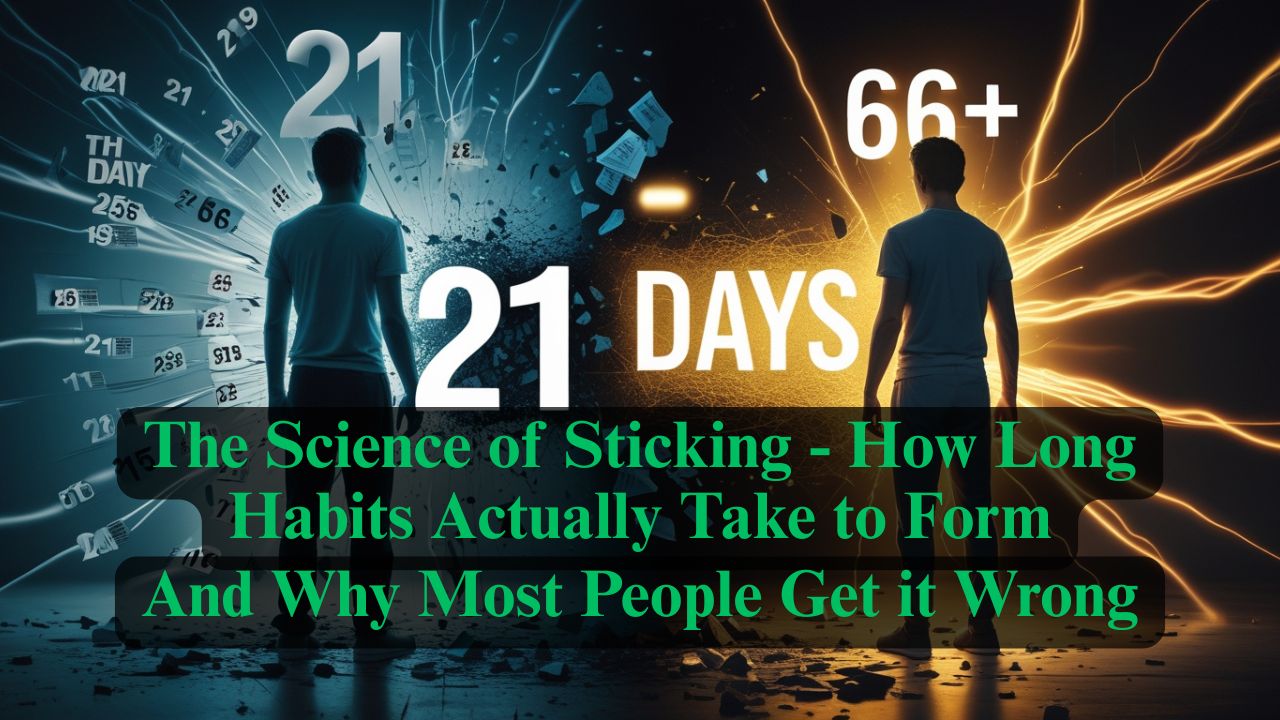
The Science of Sticking
If you've ever tried to build a new habit, you've probably heard that it takes 21 days. This number gets thrown around so often that it feels like scientific fact.
Read Full Article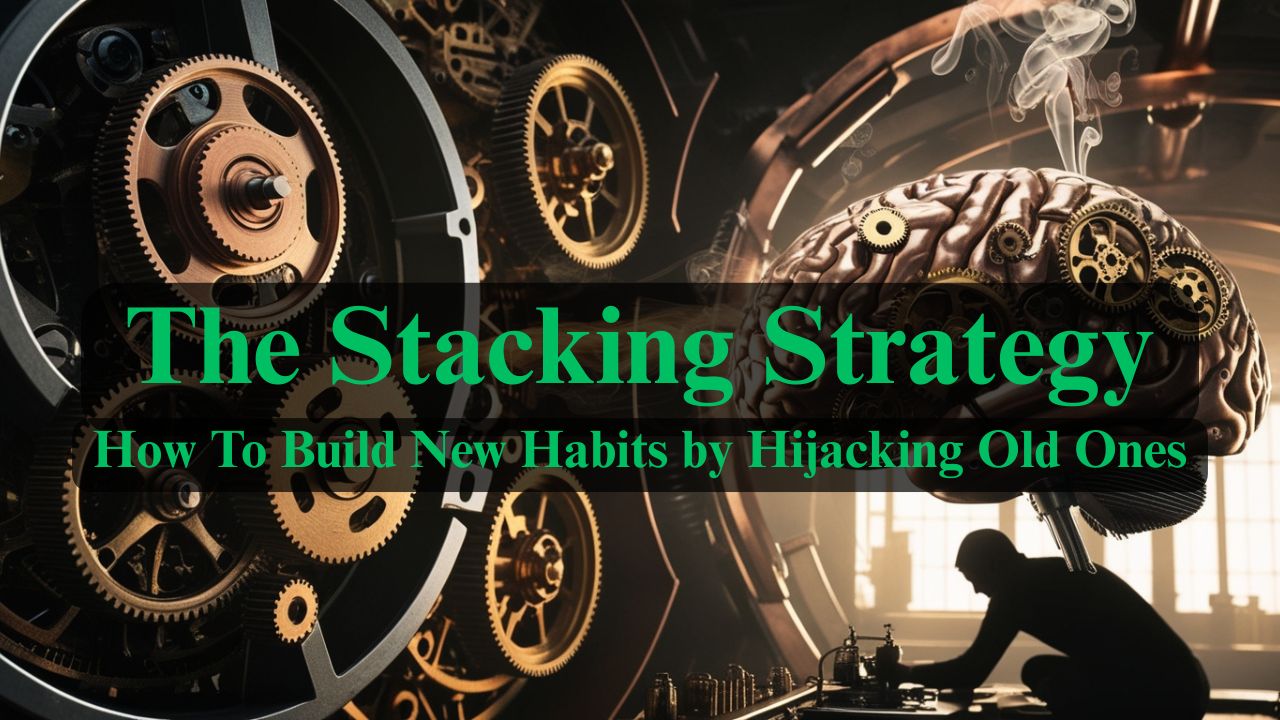
The Stacking Strategy
What if I told you that the habits you already have—even the ones you consider "bad"—could become the secret weapons for building the habits you want?
Read Full Article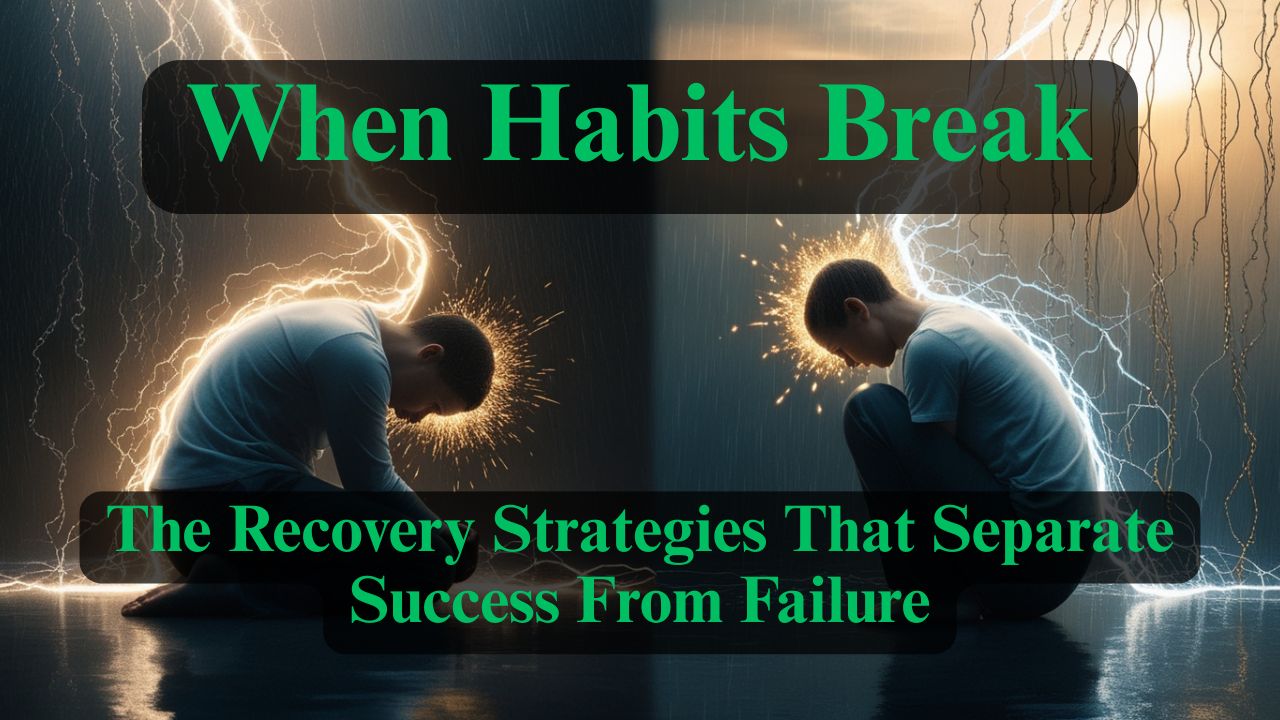
When Habits Fail - The Recovery Strategies That Separate Success From Failure
Here's what nobody tells you about building habits: you will fail. You'll miss days. You'll fall off track. You'll have weeks where everything falls apart.
Read Full Article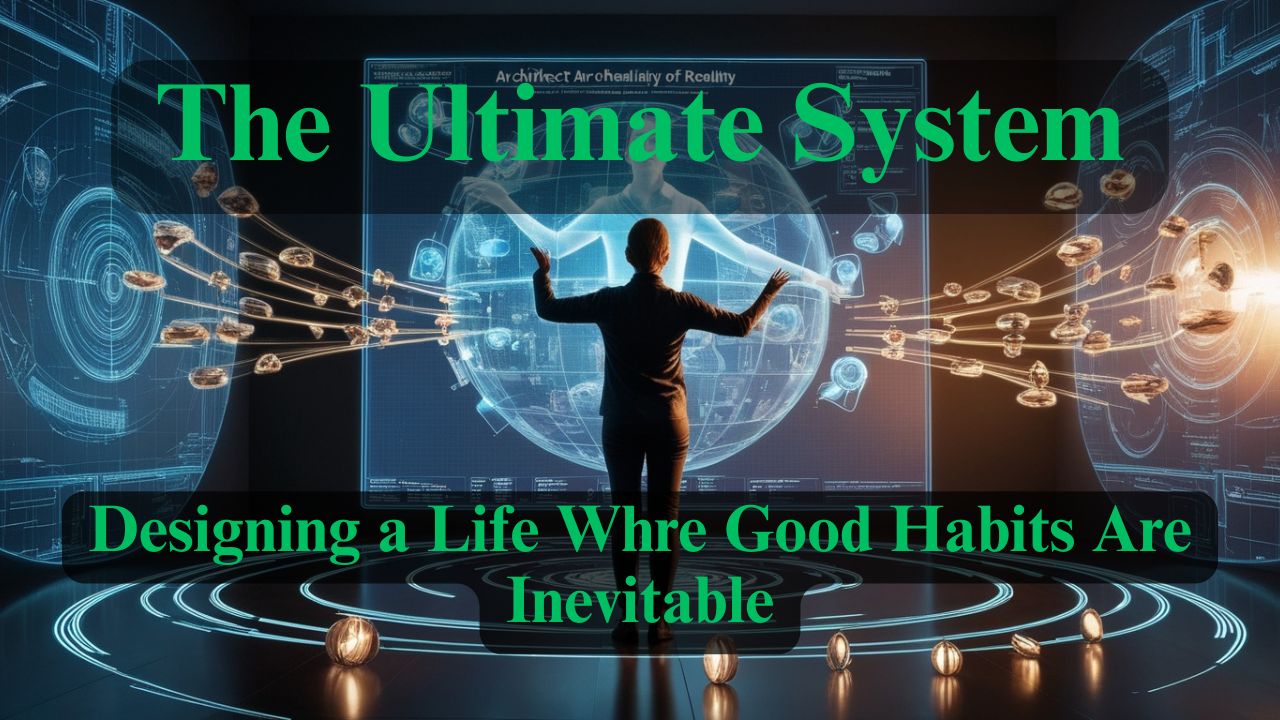
The Ultimate System - Designing a Life Where Good Habits Are Inevitable
You've learned to recognize habits, understand their formation timeline, stack them strategically, and recover from setbacks.
Read Full Article

